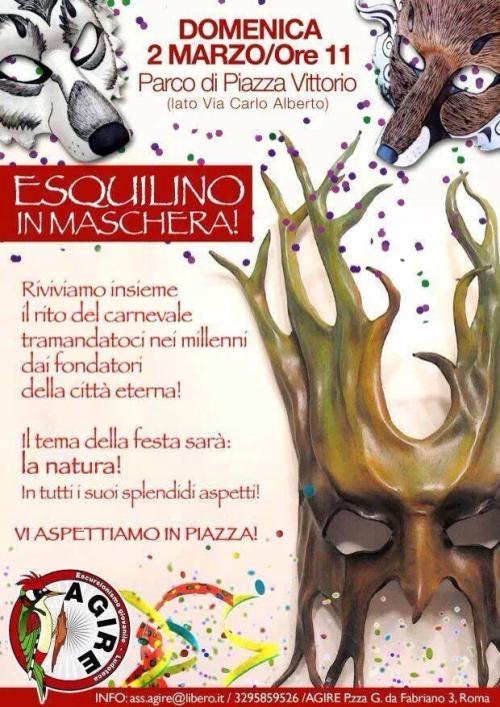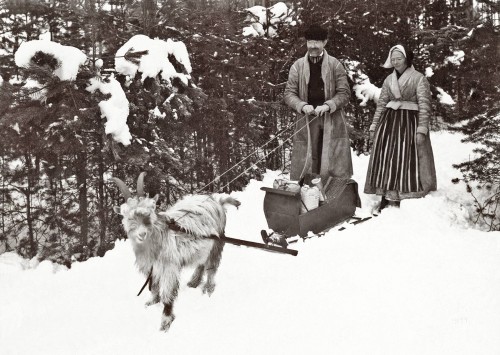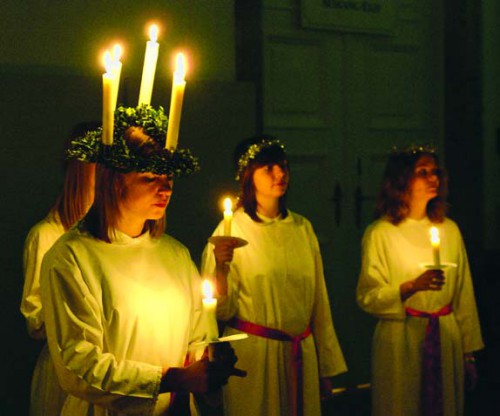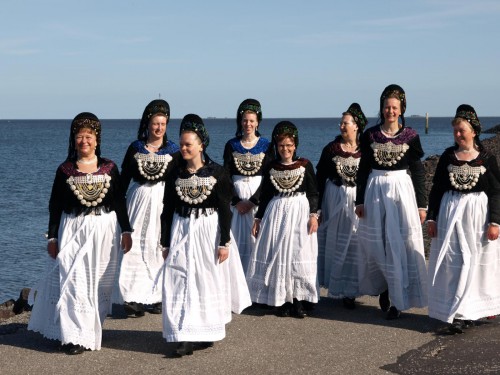samedi, 03 mai 2014
Artaud, Castaneda, Eliade e il viaggio iniziatico
di Chiara Donnini
Fonte: ideeinoltre
Tante altre notizie su www.ariannaeditrice.it
00:05 Publié dans Philosophie, Traditions | Lien permanent | Commentaires (0) | Tags : philosophie, antonin arthaud, mircea eliade, castaneda, traditions, traditionalisme |  |
|  del.icio.us |
del.icio.us |  |
|  Digg |
Digg | ![]() Facebook
Facebook
mercredi, 23 avril 2014
Hercule, un Jésus européen ?
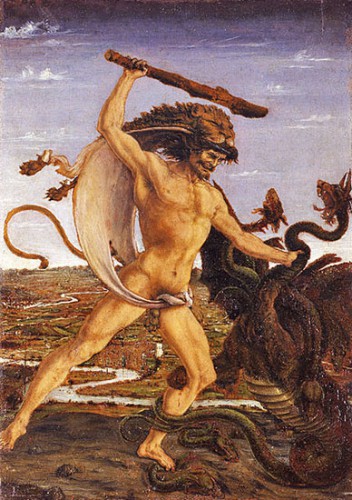
Hercule, un Jésus européen?
par Thomas Ferrier
Ex: http://thomasferrier.hautetfort.com
« Hercules, the legend begins » est enfin sorti sur les écrans français après avoir connu un terrible échec commercial, il y a deux mois, aux Etats-Unis. On pouvait donc craindre le pire, malgré une bande annonce des plus alléchantes. Après avoir vu ce film, que j’ai pour ma part beaucoup apprécié, je m’interroge sur le pourquoi de cette descente en flammes et de ce qui a déplu à la critique.
Bien sûr, dans cette Grèce du XIIIème siècle avant notre ère, il y a de nombreux anachronismes comme des combats de gladiateurs ou encore la conquête de l’Egypte. Si de beaux efforts graphiques ont été faits, on se trouve dans une Grèce de légende, à mi-chemin entre la Grèce mycénienne et la Grèce classique. Et de même, la légende du héros, avec les douze travaux, est absente ou malmenée, alors que de nouveaux éléments s’ajoutent, comme une rivalité entre Héraclès et son frère Iphiclès. Tout cela a pu surprendre un public habitué à ces classiques.
Et pourtant de nombreuses idées audacieuses se sont glissées dans ce film et le rendent passionnant. Ainsi, la vie d’Hercule s’apparente par certains aspects à celle de Jésus. De nombreux films américains, à l’instar de Man of Steel, la comparaison implicite est patente. Dans « Hercules », elle est voulue mais détournée. Alcmène s’unit à Zeus sans que le dieu apparaisse, se manifestant par une tempête accompagnée d’éclairs. Cela ne vous rappelle rien ? De même, Hercule est fouetté et attaché par les deux bras dans une scène rappelant la crucifixion. Mais il en sort vainqueur, brisant ses liens, et écrasant grâce à deux énormes blocs de pierre attachés par des chaînes à ses bras tous ses ennemis. Enfin, il devient concrètement roi à la fin de son aventure, ne se revendiquant pas simplement « roi de son peuple » mais roi véritable.
Bien sûr, ce « Jésus » aux muscles imposants mais sobres, à la pigmentation claire et aux cheveux blonds, n’a pas la même morale. Fils du maître de l’univers, dont il finit par accepter la paternité, Zeus en personne, il tue ses ennemis, jusqu’à son propre père adoptif, combat avec une férocité qui en ferait l’émule d’Arès, et semble quasi insensible à la douleur. Une scène le présente même recevant sur son épée la foudre de Zeus qu’il utilise ensuite comme une sorte de fouet électrique pour terrasser les combattants qui lui font face.
Par ailleurs, la « diversité » est réduite à sa plus petite expression, limitée à des mercenaires égyptiens, crédibles dans leur rôle. Les Grecs en revanche sont tous bien européens, avec des traits parfois nordiques. Il n’est pas question comme dans « Les Immortels » ou « Alexandre » de voir des afro-américains en armure ou jouant les Roxanes. En revanche, on retrouve davantage l’esprit de Troie, l’impiété en moins. En effet, cette fois les athées ont le mauvais rôle à l’instar du roi de Tirynthe Amphitryon. Hercule lui-même, qui ne croit pas dans l’existence des dieux pendant une bonne partie du film, finit par se revendiquer explicitement de la filiation de Zeus et la prouver. En outre, Hercules rappelle par certains côtés le premier Conan, puisque le héros est trahi et fait prisonnier, puis s’illustre dans des combats dans l’arène d’une grande intensité, bondissant tel un fauve pour fracasser le crâne d’un ennemi, mais il reste toujours chevaleresque, protégeant les femmes et les enfants.
A certains moments, le film semble même s’inspirer des traits guerriers qu’un Breker donnait à ses statues. Kellan Lutz n’est sans doute pas un acteur d’une expression théâtrale saisissante mais il est parfaitement dans son rôle. Si les douze travaux se résument à étrangler le lion de Némée, à vaincre de puissants ennemis mais qui demeurent humains, et à reconquérir sa cité, son caractère semi-divin, même si le personnage refuse tout hybris, est non seulement respecté mais amplifié. En ce sens, Hercule apparaît comme un Jésus païen et nordique, mais aussi un Jésus guerrier et vengeur, donc très loin bien sûr du Jésus chrétien. Fils de Dieu, sa morale est celle des Européens, une morale héroïque.
Toutefois, bien sûr, certains aspects modernes apparaissent, comme la relation romantique entre Hercule et Hébé, déesse de la jeunesse qu’il épousera après sa mort dans le mythe grec, et le triomphe de l’amour sur le mariage politique. C’est bien sûr anachronique. Mais « la légende d’Hercule » ne se veut pas un film historique.
Enfin, la morale est sauve puisque dans le film, Héra autorise Zeus à la tromper, alors que dans le mythe classique elle met le héros à l’épreuve par jalousie, afin de faire naître un sauveur. Zeus ne peut donc être « adultère ». Cela donne du sens au nom du héros, expliqué comme « le don d’Héra », alors qu’il signifie précisément « la gloire d’Héra », expression énigmatique quand on connaît la haine de la déesse envers le héros. Pour s’exprimer, Héra pratique l’enthousiasme sur une de ses prêtresses, habitant son corps pour transmettre ses messages. C’est conforme à la tradition religieuse grecque.
Les défauts du film sont mineurs par rapport à ses qualités, graphiques comme scénaristiques, mais ce qui a dû nécessairement déranger c’est qu’il est trop païen, trop européen, trop héroïque, qu’il singe le christianisme pour mieux s’y opposer. Le fils de Dieu est marié et a un enfant (à la fin du film). Le fils de Dieu n’accepte pas d’être emmené à la mort mais triomphe de ses bourreaux. Le fils de Dieu devient « roi des Grecs ». Enfin le fils de Dieu apparaît comme tel aux yeux de tous et n’est pas rejeté par son propre peuple. Ce film ne pouvait donc que déranger une société américaine qui va voir des films où Thor lance la foudre, où Léonidas et ses « 300 » combattent jusqu’à la mort avec une ironie mordante, mais qui reste très chrétienne, très puritaine et hypocrite.
Thomas FERRIER (LBTF/PSUNE)
00:05 Publié dans Cinéma, Traditions | Lien permanent | Commentaires (0) | Tags : herakles, hercule, mythologie, mythe, religion, traditions, mythologie grecque, grèce antique, antiquité grecque, hellenisme, film, cinéma, 7ème art |  |
|  del.icio.us |
del.icio.us |  |
|  Digg |
Digg | ![]() Facebook
Facebook
mardi, 15 avril 2014
Iconografia e simboli del potere imperiale
Iconografia e simboli del potere imperiale
Ex: http://www.centrostudilaruna.it
 Il filosofo tedesco Ernest Cassirer ebbe ad affermare che l’uomo è “animal symbolicum”, “animale simbolico”, nella sua opera Saggi sull’uomo scriverà infatti: «La ragione è un termine assai inadeguato per comprendere tutte le forme della vita culturale dell’uomo in tutta la loro ricchezza e varietà. Ma tutte queste forme sono forme simboliche. Per conseguenza, invece di definire l’uomo animal rationale, possiamo definirlo animal symbolicum. Così facendo indichiamo ciò che specificamente lo distingue e possiamo capire la nuova strada che si è aperta all’uomo, la strada verso la civiltà.» (1)
Il filosofo tedesco Ernest Cassirer ebbe ad affermare che l’uomo è “animal symbolicum”, “animale simbolico”, nella sua opera Saggi sull’uomo scriverà infatti: «La ragione è un termine assai inadeguato per comprendere tutte le forme della vita culturale dell’uomo in tutta la loro ricchezza e varietà. Ma tutte queste forme sono forme simboliche. Per conseguenza, invece di definire l’uomo animal rationale, possiamo definirlo animal symbolicum. Così facendo indichiamo ciò che specificamente lo distingue e possiamo capire la nuova strada che si è aperta all’uomo, la strada verso la civiltà.» (1)
Come ogni altro fenomeno umano, anche la politica, nel senso più alto del termine, è da sempre stata soggetta ad un processo di simbolizzazione. Ciò è riscontrabile soprattutto attraverso lo studio della scienza araldica, o dell’iconografia, sia del potere temporale che di quello spirituale, spesso in passato strettamente connessi.
Nell‘iconografia occidentale, ad esempio, l’Imperatore è spesso stato accostato ai significati simbolici dell’aquila, in quanto ritenuto investito dall’alto, per la sua peculiarità di vedere oltre, di essere in qualche modo un chiaro-veggente, un illuminato, qualità queste attribuite tradizionalmente al rapace. Nel Bestiaire di Philippe de Thaon del 1126, infatti, si leggono questi versi sull’aquila: «L’aquila è la regina degli uccelli; essa mostra un esempio molto bello. Giustamente in latino la chiamiamo “chiaro-veggente”, perché guarda il sole quando è più luminoso e sebbene lo guardi fissamente, tuttavia non distoglie lo sguardo» (2).
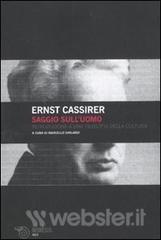 Il simbolo dell’aquila fu signum delle legioni di Roma, inoltre proprio sotto forma di aquila si pensava che le anime dei Cesari liberatesi del corpo assurgessero all’immortalità solare. L’aquila era altresì ritenuta sacra al dio del cielo e padre degli dèi Giove. Scriverà Julius Evola che “fra gli stessi Aztechi si vede figurar l’aquila a indicare il luogo per la capitale del nuovo impero”, e che “il ba, concepito come la parte dell’essere umano destinata ad esistenza eterna celeste in stati di gloria, nei geroglifici egizi è figurato spesso da uno sparviero, equivalente egizio dell’aquila”. Inoltre “Nei Rg-Veda l’aquila porta ad Indra la mistica bevanda che lo costituirà a signore degli déi” (3).
Il simbolo dell’aquila fu signum delle legioni di Roma, inoltre proprio sotto forma di aquila si pensava che le anime dei Cesari liberatesi del corpo assurgessero all’immortalità solare. L’aquila era altresì ritenuta sacra al dio del cielo e padre degli dèi Giove. Scriverà Julius Evola che “fra gli stessi Aztechi si vede figurar l’aquila a indicare il luogo per la capitale del nuovo impero”, e che “il ba, concepito come la parte dell’essere umano destinata ad esistenza eterna celeste in stati di gloria, nei geroglifici egizi è figurato spesso da uno sparviero, equivalente egizio dell’aquila”. Inoltre “Nei Rg-Veda l’aquila porta ad Indra la mistica bevanda che lo costituirà a signore degli déi” (3).
Quando Costantino trasferì la sede imperiale da Roma a Costantinopoli l’aquila bicipite divenne simbolo dell’intero territorio dell’Impero Romano d’Occidente e d’Oriente, stante a rappresentare le due capitali dell’Impero. L’aquila bizantina sarà adottata, in seguito, da Mosca, in qualità di nuova Costantinopoli. Per l’Impero Russo l’aquila bicipite stava a simboleggiare i poteri temporale e spirituale riuniti nell’unica persona dello zar. In seguito le due teste dell’aquila russa passarono a simboleggiare le due parti del continente, fra Europa ed Asia, sulle quali si estendeva il territorio russo. In Occidente, invece, l’aquila bicipite, nera in campo dorato, divenne il simbolo del Sacro Romano Imperatore; il primo ad adottarla in questa forma fu Ludovico il Bavaro nel 1345 e, più tardi, l’Imperatore Sigismondo quando ascese al trono imperiale nel 1410.
Un altro dei simboli più rappresentativi dell’Impero (oltre che del Papato) è il c.d. globo crucigero (globus cruciger): una sfera con in cima apposta una croce. Esso rappresenta il dominio di Cristo (la croce) sul cosmo (la sfera), ed è, inoltre, presente sulla tiara papale, essendo il Papa considerato “padre dei principi e dei re, rettore del mondo, vicario in terra di Cristo”. Altresì la croce, quale doppia congiunzione di punti diametralmente opposti, rappresenta il simbolo dell’unità degli estremi, ad esempio il cielo e la terra. In essa si congiungono tempo e spazio e per ciò, ancor prima dell’avvento del cristianesimo, fu considerata come simbolo universale della mediazione. La croce, per ciò stesso, diviene emblema dell’Imperatore per la sua funzione di mediatore fra Dio e gli uomini, in quanto detentore di un potere temporale assunto per mandato divino. Il Globo terrestre sormontato dalla Croce, inoltre, è l’insegna del potere imperiale iniziaticamente considerato, dell’imperio esercitato sull’Anima del Mondo, ossia sul fluido vitale universale che anima i corpi siderali: secondo un’antica tradizione chi riesce a coagulare tale fluido e a dissolverne a volontà le coagulazioni, comanda all’Anima del Mondo e detiene il supremo potere magico.
Altri simboli connessi al potere e all’autorità regale ed imperiale sono lo scettro, legato da analogia con l’“asse del mondo” (per quanto concerne l’Oriente si ricordi il complementare simbolo del vajra o dorje della tradizione buddhista) ed il trono, legato al “polo” e al “centro immobile”. Similmente in Oriente alla figura del chakravartin (sovrano universale) è connesso l’ancestrale simbolo dello swastika, avente anch’esso un significato “polare”.
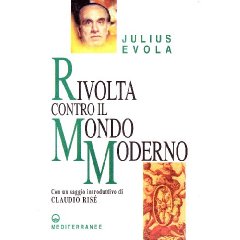 Una parte centrale nell’ampio spettro della simbologia imperiale è rivestita dal simbolo del Sole. Il Sole, astro luminoso che dà vita, luce e calore è l’epifania suprema del divino. Così si esprimerà Dante sulla simbologia solare per rappresentare il divino: «non esiste cosa visibile, in tutto il mondo, più degna del sole di fungere da simbolo di Dio, poiché esso illumina con vita visibile prima se stesso, poi tutti i corpi celesti e terreni». Il Sole rappresenta l’Imperatore, investito del principio di autorità massima ed universale, ma anche detentore della più elevata nobiltà d’animo. A tal proposito Mircea Eliade affermò che «sarebbe bene insistere sull’affinità della teologia solare con le élites, siano sovrani, eroi, iniziati o filosofi». Anche in Giappone al potere imperiale è accostato il simbolismo solare, quello della dea Amaterasu ōmikami, Dea del Sole e progenitrice della dinastia regnante. Il Sole è altresì emblema del Re del Mondo, e Cristo è designato dalla liturgia cattolica col titolo di Sol Justitiae: il Verbo è effettivamente il “Sole spirituale”, cioè il vero “Centro del Mondo”. Il simbolismo solare per indicare Cristo è molto adoperato nella Bibbia, inoltre, presso i primi cristiani Cristo è raffigurato non come un essere dalle fattezze umane, ma come un sole fiammeggiante: non a caso il monogramma IHS sormontato da una croce e posto dentro una razza fiammante è uno dei più comuni cristogrammi. Anche al giorno d’oggi il simbolismo del Sole per indicare il Cristo è molto adoperato, basti pensare agli ostensori, aventi per lo più la forma di disco solare. Curiosamente il simbolismo solare è attribuito anche ad un’altra figura soterica, quella del principe Siddhārtha Gautama, il Buddha storico, spesso rappresentato nell’iconografia tradizionale recante dietro il capo il disco solare.
Una parte centrale nell’ampio spettro della simbologia imperiale è rivestita dal simbolo del Sole. Il Sole, astro luminoso che dà vita, luce e calore è l’epifania suprema del divino. Così si esprimerà Dante sulla simbologia solare per rappresentare il divino: «non esiste cosa visibile, in tutto il mondo, più degna del sole di fungere da simbolo di Dio, poiché esso illumina con vita visibile prima se stesso, poi tutti i corpi celesti e terreni». Il Sole rappresenta l’Imperatore, investito del principio di autorità massima ed universale, ma anche detentore della più elevata nobiltà d’animo. A tal proposito Mircea Eliade affermò che «sarebbe bene insistere sull’affinità della teologia solare con le élites, siano sovrani, eroi, iniziati o filosofi». Anche in Giappone al potere imperiale è accostato il simbolismo solare, quello della dea Amaterasu ōmikami, Dea del Sole e progenitrice della dinastia regnante. Il Sole è altresì emblema del Re del Mondo, e Cristo è designato dalla liturgia cattolica col titolo di Sol Justitiae: il Verbo è effettivamente il “Sole spirituale”, cioè il vero “Centro del Mondo”. Il simbolismo solare per indicare Cristo è molto adoperato nella Bibbia, inoltre, presso i primi cristiani Cristo è raffigurato non come un essere dalle fattezze umane, ma come un sole fiammeggiante: non a caso il monogramma IHS sormontato da una croce e posto dentro una razza fiammante è uno dei più comuni cristogrammi. Anche al giorno d’oggi il simbolismo del Sole per indicare il Cristo è molto adoperato, basti pensare agli ostensori, aventi per lo più la forma di disco solare. Curiosamente il simbolismo solare è attribuito anche ad un’altra figura soterica, quella del principe Siddhārtha Gautama, il Buddha storico, spesso rappresentato nell’iconografia tradizionale recante dietro il capo il disco solare.
Altro simbolo che accomuna il Cristo e il grande Filosofo indiano è quello del leone: il supremo insegnamento del Buddha infatti sarà indicato come il “Ruggito del leone”, ed un leone è anche il simbolo della tribù di Giuda descritta nell’Antico Testamento, dalla quale discendeva Gesù Cristo. Il leone è universalmente considerato quale simbolo di regalità, di potenza e di nobiltà, è l’animale re della Savana per i popoli dell’Africa subsahariana. Nella tradizione islamica, l’Imam Alì, nominato direttamente dal Profeta Maometto assunse gli epiteti di Ghadanfar, leone, o Asadullah, leone di Dio. Nell’astrologia il segno zodiacale del Leone è il domicilio del Sole. I leoni sono stati a lungo venerati nel Vicino e nell’Estremo Oriente e furono utilizzati dai vari governanti come simboli del potere regale, proprio come lo erano in Europa: il leone, con la sua fama di animale dotato di gran forza, di coraggio, di nobiltà, così conforme all’ideale della cavalleria medievale fu utilizzarlo come figura ornamentale sulle armi dei Franchi (Merovingi e Carolingi). Mentre in Inghilterra l’introduzione del leone quale simbolo araldico è da attribuirsi ad Enrico II, che adottò uno stemma rosso con un leone rampante d’oro. Per il suo coraggio ed eroismo Riccardo I d’Inghilterra fu insignito dell’epiteto “Cuor di Leone”. Leone fu inoltre il nome di molti imperatori e papi.
Note
(1) Ernest Cassirer, Saggi sull’uomo, Mimesis, Milano, 2011.
(2) Le Bestiaire, Éd. Emmanuel Walberg, Genève, Slatkine Reprints, 1970.
(3) Julius Evola, Rivolta contro il mondo moderno, Edizioni Mediterranee, Roma, 1998.
00:05 Publié dans Traditions | Lien permanent | Commentaires (0) | Tags : traditions, impérialité, empire, saint-empire, symbolique, mythes |  |
|  del.icio.us |
del.icio.us |  |
|  Digg |
Digg | ![]() Facebook
Facebook
lundi, 14 avril 2014
Geopolítica, geografía sagrada, geofilosofía
por Claudio Mutti
Ex: http://paginatransversal.wordpress.com
De acuerdo con una definición integral, que intenta sintetizar aquellas proporcionadas por diversos estudiosos, la geopolítica puede ser considerada como “el estudio de las relaciones internacionales en una perspectiva espacial y geográfica, en el que se toman en cuenta la influencia de los factores geográficos sobre la política exterior de los Estados y la rivalidad de poder sobre territorios en disputa entre dos o más Estados, o entre diferentes grupos o movimientos políticos armados” (1).
Por cuán grande sea el peso atribuido a los factores geográficos, aún sigue existiendo la relación de la geopolítica con la doctrina del Estado, por lo que es natural plantearse una interrogante que hasta el momento no parece haber sido tema de reflexión de los estudiosos. La pregunta es la siguiente: ¿Sería posible aplicar también a la geopolítica la famosa afirmación de Carl Schmitt, según la cual “todos los conceptos sobresalientes de la moderna doctrina del Estado son conceptos teológicos secularizados”? (2) En otras palabras, ¿Es posible suponer que la misma geopolítica represente un eco moderno, si no una derivación secularizada de los conceptos teológicos vinculados con la “geografía sagrada”?
Si así fuese, la geopolítica se encontraría en una situación similar no sólo como la descrita sobre la “ciencia moderna del Estado”, sino también con la generalidad de la ciencia moderna. Para ser más explícito, recurramos a una cita de René Guénon: “Queriendo separar radicalmente las ciencias de todo principio superior, so pretexto de asegurar su independencia, la concepción moderna les quita toda significación profunda, e inclusive todo interés verdadero desde el punto de vista del conocimiento, y ella no puede desembocar más que en un callejón sin salida, puesto que las encierra en un dominio irremediablemente limitado” (3).
En cuanto atañe particularmente a la “geografía sagrada”, con la cual -según nuestra hipótesis- se relacionaría de algún modo la geopolítica, es de igual manera Guénon quién nos proporciona una sintética indicación al respecto: “Ahora bien, efectivamente existe una «geografía sagrada» o tradicional que los modernos ignoran tan completamente como los restantes conocimientos del mismo género; existe un simbolismo geográfico en la misma medida que existe un simbolismo histórico y es el valor simbólico de las cosas lo que les da su significado profundo dado que así queda establecida su correspondencia con las realidades de orden superior; no obstante, para que esta correspondencia quede determinada de forma efectiva, es preciso ser capaz de un modo u otro de percibir en las propias cosas el reflejo de tales realidades. Así ocurre que existen lugares particularmente aptos para servir de «soporte» a la acción de «las influencias espirituales» y este es el fundamento que siempre ha tenido el establecimiento de ciertos «centros» tradicionales principales o secundarios, cuyos más claros exponentes fueron los «oráculos» de la Antigüedad así como los lugares de peregrinación; también existen otros lugares particularmente propicios a la manifestación de «influencias» de un carácter completamente opuesto y pertenecientes a las regiones más inferiores del ámbito de lo sutil” (4).
Se ha dicho que rastros de la “geografía sagrada” son reconocibles en algunas características de las nociones geopolíticas, por lo tanto, éstas podrían ser consideradas schmittianamente como “conceptos teológicos secularizados”. Consideremos, por ejemplo, los términos mackinderianos como Heartland y pivot area, los cuales, invocan de manera explicita el simbolismo del corazón y el simbolismo axial, reproducen de alguna manera la idea de “Centro del Mundo” que los antiguos representaban por medio de una variedad de símbolos, geográficos y no geográficos. Muchas veces se ha ofrecido la ocasión para observar que, si la ciencia de las religiones ha demostrado que el homo religiosus “aspira a vivir lo más cerca posible del Centro del Mundo y sabe que su país se encuentra efectivamente en medio de la tierra” (5), esta concepción no ha desaparecido con la visión “arcaica” del mundo, al contrario, ha sobrevivido en una forma más o menos consciente en contextos históricos y culturales más recientes (6).
Por otra parte, dentro de los términos geográficos y geopolíticos existen algunos que las culturas tradicionales han utilizado para describir la realidad perteneciente a la esfera espiritual. Este es el caso del término polo, que en el léxico del esoterismo islámico indica el vértice de la jerarquía iniciática (al-qutb); es el caso de istmo, que en la forma árabe (al-barzakh) indica aquel mundo intermedio al que también se refiere la expresión geográfica de origen coránica: “la confluencia de dos mares” (majma’ al-bahrayn), “confluencia, es decir, del mundo de las Ideas puras con el mundo de los objetos sensibles” (7).
Pero también el concepto de Eurasia puede ser asignado a la categoría de “conceptos teológicos secularizados”.
De hecho, el más antiguo texto teológico de los Griegos, la Teogonía de Hesíodo, nos cuenta que: “Europa ( … ) y Asia” (8) constan entre las hijas de Océano y Tetis, “una sagrada estirpe de hijas (thygatéron hieron genos) que por la tierra se encargan de la crianza de los hombres, en compañía del soberano Apolo y de los Ríos, y han recibido de Zeus este destino” (9).
Cabe destacar que entre las hermanas Europa y Asia también figura Perseis, cuyo nombre está significativamente relacionado no sólo con el griego Perseo, sino también con Perses, su hijo y progenitor de los persas. Escuchemos ahora al teólogo de la historia: “Pero cuando Perseo, hijo de Dánae y de Zeus, llegó al reino de Cefeo, hijo de Belo, y se casó con su hija Andrómeda, tuvo en ella un hijo a quien puso el nombre de Perses, y le dejó allí, porque Cefeo no había tenido hijo varón. De este Perses, pues, tomaron el nombre” (10).
El estrecho parentesco entre Asia con Europa es finalmente proclamado también por el teólogo de la tragedia, quien en la parodia de los Persianos nos presenta a Persia y Grecia como dos “hermanas de sangre, de una misma estirpe (kasignéta génous tautou)” (11), mostrándonos “absolutamente distintas (las dos que, en Herodoto, no pueden evitar ir a la guerra) como de raíz inseparables” (12). Este es el comentario de Massimo Cacciari, para quien la imagen esquilea, representativa de la radical conexión de Europa y Asia, le ha proporcionado el motivo para crear una “geofilosofia de Europa”.
Fabio Falchi intenta ir más allá: en este volumen, él traza las líneas de una “geofilosofía de Eurasia”. Acogiendo la perspectiva corbiniana de Eurasia, cual lugar ontológico teofanico (13), el autor aspira para hacer de la posición geofilosófica el grado de pasaje para aquella “geosófica”, lo cual es completamente inteligible si, y sólo si, se coloca en relación con la perspectiva metafísica” (14).
(Traducción: Francisco de la Torre)
1 Emidio Diodato, Che cos’è la geopolitica, Carocci, Roma 2011.
2 Carl Schmitt, Teología política. Editorial Struhart & Cía. Buenos Aires, 1985, p. 95.
3 René Guénon, La Crisis del Mundo Moderno. Ediciones Obelisco. Barcelona. 1982, p. 44.
4 René Guénon, El Reino de la Cantidad y los Signos de los Tiempos. Ediciones Paidós Ibérica S.A.. Barcelona. 1997, p. 122 y 123.
5 Mircea Eliade, Lo sagrado y lo profano, Guadarrama/Punto Omega, Madrid, 1981, p. 43.
6 Claudio Mutti, La funzione eurasiatica dell’Iran, “Eurasia”, 2, 2012, p. 176; Geopolitica del nazionalcomunismo romeno, in: Marco Costa, Conducǎtor. L’edificazione del socialismo romeno, Edizioni all’insegna del Veltro, Parma 2012.
7 Henry Corbin, Templo y contemplación. Ensayos sobre el Islam iranio. Editorial Trotta, Madrid, 2003, p. 262. Sobre el barzakh, cfr. Glauco Giuliano, L’immagine del tempo in Henry Corbin, Mimesis, Milano-Udine 2009, pp. 97-123.
11 Esquilo, Los persas, 185-186. Sobre esta imagen: cfr. C. Mutti, L’Iran in Europa, “Eurasia”, 1, 2008, pp. 33-34.
12 Massimo Cacciari, Geofilosofia dell’Europa, Adelphi, Milano 1994, p. 19.
13 “Eurasia es, hoy y para nosotros, la modalidad geográfica-geosófica del Mundus imaginalis” (Glauco Giuliano, L’immagine del tempo in Henry Corbin, cit., p. 40).
14 Glauco Giuliano, Tempus discretum. Henry Corbin all’Oriente dell’Occidente, Edizioni Torre d’Ercole, Travagliato (Brescia) 2012, p. 16.
00:06 Publié dans Traditions | Lien permanent | Commentaires (0) | Tags : claudio mutti, géopolitique, géographie, géographie sacrée, géophilosophie, philosophie |  |
|  del.icio.us |
del.icio.us |  |
|  Digg |
Digg | ![]() Facebook
Facebook
samedi, 12 avril 2014
Friedrich Georg Jünger: The Titans and the Coming of the Titanic Age
Friedrich Georg Jünger:
The Titans and the Coming of the Titanic Age
Tom Sunic
Translated from the German and with an Introduction by Tom Sunic
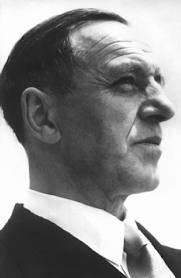
Friedrich Georg Jünger (1898-1977)
Introduction: Titans, Gods and Pagans by Tom Sunic
Below is my translation of several passages from the last two chapters from Friedrich Georg Jünger’s little known book, Die Titanen, 1943, 1944 (The Titans). Only the subtitles are mine. F.G. Jünger was the younger brother of Ernst Jünger who wrote extensively about ancient Greek gods and goddesses. His studies on the meaning of Prometheism and Titanism are unavoidable for obtaining a better understanding of the devastating effects of the modern belief in progress and the role of “high-tech” in our postmodern societies. Outside the German-speaking countries, F.G. Jünger’s literary work remains largely unknown, although he had a decisive influence on his renowned brother, the essayist Ernst Jünger. Some parts of F.G Jünger’s other book,Griechische Götter (1943) (Greek Gods), with a similar, if not same topic, and containing also some passages from Die Titanen, were recently translated into French (Les Titans et les dieux, 2013).
In the footsteps of Friedrich Nietzsche and along with hundreds of German philosophers, novelists, poets and scientists, such as M. Heidegger, O. Spengler, C. Schmitt, L. Clauss, Gottfried Benn, etc., whose work became the object of criminalization by cultural Bolsheviks and by the Frankfurt School in the aftermath of WWII, F. G. Jünger can also be tentatively put in the category of “cultural conservative revolutionaries” who characterized the political, spiritual and cultural climate in Europe between the two world wars.
Ancient European myths, legends and folk tales are often derided by some scholars, including some Christian theologians who claim to see in them gross reenactments of European barbarism, superstition and sexual promiscuity. However, if a reader or a researcher immerses himself in the symbolism of the European myths, let alone if he tries to decipher the allegorical meaning of diverse creatures in the myths, such as for instance the scenes from the Orphic rituals, the hellhole of Tartarus, or the carnage in the Nibelungen saga, or the final divine battle in Ragnarök, then those mythical scenes take on an entirely different meaning. After all, in our modern so-called enlightened and freedom-loving liberal societies, citizens are also entangled in a profusion of bizarre infra-political myths, in a myriad of weird hagiographic tales, especially those dealing with World War II vicitmhoods, as well as countless trans-political, multicultural hoaxes enforced under penalty of law. Therefore, understanding the ancient European myths means, first and foremost, reading between the lines and strengthening one’s sense of the metaphor.
There persists a dangerous misunderstanding between White nationalists professing paganism vs. White nationalists professing Christian beliefs. The word “paganism” has acquired a pejorative meaning, often associated with childish behavior of some obscure New Age individuals carrying burning torches or reading the entrails of dead animals. This is a fundamentally false conception of the original meaning of paganism. “Pagans,” or better yet polytheists, included scores of thinkers from antiquity, such as Seneca, Heraclites, Plato, etc. who were not at all like many modern self-styled and self-proclaimed “pagans” worshipping dogs or gazing at the setting sun. Being a “pagan” denotes a method of conceptualizing the world beyond the dualism of “either-or.” The pagan outlook focuses on the rejection of all dogmas and looks instead at the notion of the political or the historical from diverse and conflicting perspectives. Figuratively speaking, the plurality of gods means also the plurality of different beliefs and different truths. One can be a good Christian but also a good “pagan.” For that matter even the “pagan” Ernst Jünger, F.G. Jünger’s older brother, had a very Catholic burial in 1998.
When F.G Jünger’s published his books on the Titans and the gods, in 1943 and in 1944, Germany lay in ruins, thus ominously reflecting F.G. Jünger’s earlier premonitions about the imminent clash of the Titans. With gods now having departed from our disenchanted and desacralized White Europe and White America, we might just as well have another look at the slumbering Titans who had once successfully fought against Chaos, only to be later forcefully dislodged by their own divine progeny.
Are the dozing Titans our political option today? F.G. Jünger’s book is important insofar as it offers a reader a handy manual for understanding a likely reawakening of the Titans and for decoding the meaning of the new and fast approaching chaos.
* * *
THE TITANS: CUSTODIANS OF LAW AND ORDER
….The Titans are not the Gods even though they generate the Gods and relish divine reverence in the kingdom of Zeus. The world in which the Titans rule is a world without the Gods. Whoever desires to imagine a kosmos atheos, i.e. a godless cosmos, that is, a cosmos not as such as depicted by natural sciences, will find it there. The Titans and the Gods differ, and, given that their differences are visible in their behavior toward man and in view of the fact that man himself experiences on his own as to how they rule, man, by virtue of his own experience, is able to make a distinction between them.
Neither are the Titans unrestrained power hungry beings, nor do they scorn the law; rather, they are the rulers over a legal system whose necessity must never be put in doubt. In an awe-inspiring fashion, it is the flux of primordial elements over which they rule, holding bridle and reins in their hands, as seen inHelios. They are the guardians, custodians, supervisors and the guides of the order. They are the founders unfolding beyond chaos, as pointed out by Homer in his remarks about Atlas who shoulders the long columns holding the heavens and the Earth. Their rule rules out any confusion, any disorderly power performance. Rather, they constitute a powerful deterrent against chaos.
The Titans and the Gods match with each other. Just as Zeus stands in forKronos, so does Poseidon stand in opposition to Oceanus, or for that matterHyperion and his son Helios in opposition to Apollo, or Coeus and Phoebe in opposition to Apollo and Artemis, or Selene in opposition to Artemis.
THE TITANS AGAINST THE GODS
What distinguishes the kingdom of Kronos from the kingdom of Zeus? One thing is for certain; the kingdom of Kronos is not a kingdom of the son. The sons are hidden in Kronos, who devoured those he himself had generated, the sons being now hidden in his dominion, whereas Zeus is kept away from Kronos by Rhea, who hides and raises Zeus in the caverns. And given that Kronos comports himself in such a manner his kingdom will never be a kingdom of the father. Kronos does not want to be a father because fatherhood is equivalent with a constant menace to his rule. To him fatherhood signifies an endeavor and prearrangement aimed at his downfall.
What does Kronos want, anyway? He wants to preserve the cycle of the status quo over which he presides; he wants to keep it unchanged. He wants to toss and turn it within himself from one eon to another eon. Preservation and perseverance were already the hallmark of his father. Although his father Uranusdid not strive toward the Titanic becoming, he did, however, desire to continue his reign in the realm of spaciousness. Uranus was old, unimaginably old, as old as metal and stones. He was of iron-like strength that ran counter to the process of becoming. But Kronos is also old. Why is he so old? Can this fluctuation of the Titanic forces take on at the same time traits of the immovable and unchangeable? Yes, of course it can, if one observes it from the perspective of the return, or from the point of view of the return of the same. If one attempts it, one can uncover the mechanical side in this ceaseless flux of the movement. The movement unveils itself as a rigid and inviolable law.
THE INFINITE SADNESS OF THE TITANS
How can we describe the sufferings of the Titans? How much do they suffer anyway, and what do they suffer from? The sound of grief uttered by the chainedPrometheus induces Hermes to derisive remarks about the same behavior which is unknown to Zeus. In so far as the Titans are in the process of moving, we must therefore also conceive of them as the objects of removal. Their struggle is onerous; it is filled with anxiety of becoming. And their anxiety means suffering. Grandiose things are being accomplished by the Titans, but grandiose things are being imposed on them too. And because the Titans are closer to chaos than Gods are, chaotic elements reveal themselves amidst them more saliently. No necessity appears as yet in chaos because chaos has not yet been measured off by any legal system. The necessity springs up only when it can be gauged by virtue of some lawfulness. This is shown in the case of Uranus and Kronos. The necessary keeps increasing insofar as lawfulness increases; it gets stronger when the lawful movements occur, that is, when the movements start reoccurring over and over again.
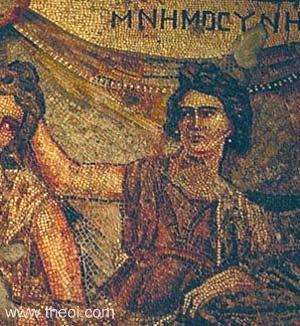
Mnemosyne (The Titaness of Memory) (mosaic, 2nd century AD)
Among the Titanesses the sadness is most visible in the grief of Rhea whose motherhood was harmed. Also in the mourning ofMnemosyne who ceaselessly conjures up the past. The suffering of this Titaness carries something of sublime magnificence. In her inaccessible solitude, no solace can be found. Alone, she must muse about herself — a dark image of the sorrow of life. The suffering of the Titans, after their downfall, reveals itself in all its might. The vanquished Titan represents one of the greatest images of suffering. Toppled, thrown down under into the ravines beneath the earth, sentenced to passivity, the Titan knows only how to carry, how to heave and how to struggle with the burden — similar to the burden carried by the Caryatids.
THE SELF-SUFFICIENT GODS
The Olympian Gods, however, do not suffer like the Titans. They are happy with themselves; they are self-sufficient. They do not ignore the pain and sufferings of man. They in fact conjure up these sufferings, but they also heal them. In Epicurean thought, in the Epicurean world of happiness, we observe the Gods dwelling in-between-the-worlds, divorced from the life of the earth and separated from the life of men, to a degree that nothing can ever reach out to them and nothing can ever come from them. They enjoy themselves in an eternal halcyon bliss that cannot be conveyed by words.
The idea of the Gods being devoid of destiny is brought out here insofar as it goes well beyond all power and all powerlessness; it is as if the Gods had been placed in a deepest sleep, as if they were not there for us. Man, therefore, has no need to think of them. He must only leave them alone in their blissful slumber. But this is a philosophical thought, alien to the myth.
Under Kronos, man is part of the Titanic order. He does not stand yet in the opposition to the order — an opposition founded in the reign of Zeus. He experiences now the forces of the Titans; he lives alongside them. The fisherman and boatman venturing out on the sea are in their Titanic element. The same happens with the shepherd, the farmer, the hunter in their realm. Hyperion, Helios and Eos determine their days, Selene regulates their nights. They observe the running Iris, they see the Horae dancing and spinning around throughout the year. They observe the walk of the nymphs Pleiades and Hyadesin the skies. They recognize the rule of the great Titanic mothers, Gaia, Rhea, Mnemosyne and that of Gaia-Themis. Above all of them rules and reigns the old Kronos, who keeps a record of what happens in the skies, on the earth, and in the waters.
TITANIC NECESSITY VS. DIVINE DESTINY
The course of human life is inextricably linked to the Titanic order. Life makes one whole with it; the course of life cannot be divorced from this order. It is the flow of time, the year’s course, the day’s course. The tides and the stars are on the move. The process resembles a ceaseless flow of the river. Kronos reigns over it and makes sure it keeps returning. Everything returns and everything repeats itself — everything is the same. This is the law of the Titans; this is their necessity. In their motion a strict cyclical order manifests itself. In this order there is a regular cyclical return that no man can escape. Man’s life is a reflection of this cyclic order; it turns around in a Titanic cycle of Kronos.
Man has no destiny here, in contrast to the demigods and the heroes who all have it. The kingdom of Zeus is teeming with life and deeds of heroes, offering an inexhaustible material to the songs, to the epics and to the tragedies. In the kingdom of Kronos, however, there are no heroes; there is no Heroic Age. For man, Kronos, and the Titans have no destiny; they are themselves devoid of destiny. Does Helios, does Selene, does Eos have a destiny? Wherever the Titanic necessity rules, there cannot be a destiny. But the Gods are also deprived of destiny wherever divine necessity prevails, wherever man grasps the Gods in a fashion that is not in opposition to them. But a man whom the Gods confront has a destiny. A man whom the Titans confront perishes; he succumbs to a catastrophe.
We can say, however, that whatever happens to man under the rule of the Titans is a lot easier than under the rule of the Gods. The burden imposed on man is much lighter.
* * *
What happens when the Gods turn away from man and when they leave him on his own? Wherever they make themselves unrecognizable to man, wherever their care for man fades away, wherever man’s fate begins and ends without them, there always happens the same thing. The Titanic forces return and they validate their claims to power. Where no Gods are, there are the Titans. This is a relationship of a legal order which no man can escape wherever he may turn to. The Titans are immortal. They are always there. They always strive to reestablish their old dominion of their foregone might. This is the dream of the Titanic race of the lapetos, and all the Iapetides who dream about it. The earth is penetrated and filled up with the Titanic forces. The Titans sit in ambush, on the lookout, ready to break out and break up their chains and restore the empire of Kronos.
TITANIC MAN
What is Titanic about man? The Titanic trait occurs everywhere and it can be described in many ways. Titanic is a man who completely relies only upon himself and has boundless confidence in his own powers. This confidence absolves him, but at the same time it isolates him in a Promethean mode. It gives him a feeling of independence, albeit not devoid of arrogance, violence, and defiance. Titanic is a quest for unfettered freedom and independence. However, wherever this quest is to be seen there appears a regulatory factor, a mechanically operating necessity that emerges as a correction to such a quest. This is the end of all the Promethean striving, which is well known to Zeus only. The new world created by Prometheus is not.
Dr. Tom Sunic is a former political science professor, author and a Board member of the American Freedom Party. He is the author of Against Democracy and Equality; The European New Right.
00:05 Publié dans Nouvelle Droite, Philosophie, Révolution conservatrice, Traditions | Lien permanent | Commentaires (0) | Tags : friedrich-georg jünger, tomislav sunic, philosophie, révolution conservatrice, allemagne, nouvelle droite, mythologie, mythes, traditions |  |
|  del.icio.us |
del.icio.us |  |
|  Digg |
Digg | ![]() Facebook
Facebook
dimanche, 23 mars 2014
The Clan vs. Modern, State-Dependent “Individualism”

The Clan vs. Modern, State-Dependent “Individualism”
By Jack Donovan
Ex: http://www.counter-currents.com
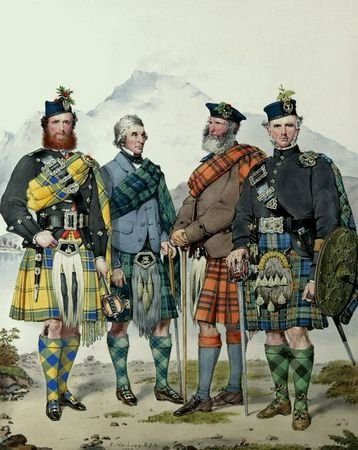 Writing for Cato Unbound, Mark Weiner, author of The Rule of the Clan [2], recently made several correct observations about the problem of reconciling statelessness or “small government” with American conceptions of individual liberty.
Writing for Cato Unbound, Mark Weiner, author of The Rule of the Clan [2], recently made several correct observations about the problem of reconciling statelessness or “small government” with American conceptions of individual liberty.
Many of my readers tend toward libertarianism, and I favor libertarian ideas by default. As a natural-born American, it’s in my DNA. You know what I’m talking about. [3]
However, I also think it’s important to look at how the State makes this swaggering self-conception of the romantic one-against-all rugged individualist possible, and how this modern anti-clannishness actually makes the individual more dependent on the modern State.
To begin, let’s look at Weiner’s essay, and go over what he got right.
What Weiner calls “rule of the clan” is similar to the male group mentality I identified in The Way of Men [4] as “the way of the gang.” Weiner admits that the “rule of the clan” is a natural, universal form of human organization which exerts a “gravitational pull,” and that it is the object of modern liberal government to resist that pull. He defines the “rule of the clan” first as a society based on kinship, but notes that extra-genetic kinship is possible, and points to the existence of gangs and criminal brotherhoods which inevitably form in the smooth, derelict spaces [5] of failed or impotent State influence.
Weiner is also sharp for making the distinction between the modern, liberal idea of honor, which is a self-imposed standard of moral goodness, and the clannish or traditional idea of honor, where individual honor is linked to both the reputation of the group as a whole and the individual’s reputation within the group. He reduces and degrades this primal, tribal form of honor with a vulgar financial analogy, but recognizes that group honor enables group autonomy and group independence. He also recognizes the profound benefits offered by group identification. In his words, the way of the clan “fosters a powerful sense of group solidarity,” “gives persons the dignity and unshakable identity that comes from clan membership,” and “generates a powerful drive toward social justice — a political economy that prizes equality.”
Weiner’s admission of the benefits of clannishness is significant, because he sums up many far-right and reactionary criticisms of modern liberalism and globalism. The prices of liberal, globalist modernity include rootlessness, detachment, an emptiness and desperation for identity that is easily exploited by commercial interests, a lack of community, and a lack of intra-national loyalty that encourages financial greed and insulates elites from the social responsibilities of nobility and the social penalties for betraying their kin, neighbors and countrymen. As the modern, liberal State is easily influenced by large amounts of money, it also insulates the wealthiest individuals from taking physical responsibility for their crimes and betrayals.
Can there be any doubt that it is only the armed protection of the State that has made it possible for the gun-grabbing billionaire Michael Bloomberg to escape a spectacular skyscraper defenestration?
Weiner argues that the modern libertarian idea of individualism, “the modern self” — which generally includes a freedom from responsibility to clan beyond the immediate nuclear family and voluntary instead of mandatory association with groups — is a in fact a product of state development which owes its fragile sense of individual autonomy to the legal protections provided by the state and the conditions of modern life.
This makes perfect sense to me, because I’ve never understood the weird, crypto-religious libertarian obsession with the idea of “natural rights.” I have always understood “rights” as a bargain between rulers and subjects, or in the case of the American democratic ideal, between “the people” and “their” government. In nature, men have no rights. There are no police to call and there is no mechanism to sue any entity that has wronged you or “infringed upon your natural rights.” This is why the primal form of human organization is not the pioneer nuclear family of libertarian individualist fantasy, but the patriarchal clan or tribe or gang of men who unite to provide coordinated protection against danger, and a communal mechanism for righting wrongs or resolving disputes. How “fair” or “just” these tribal systems of resolution and retribution actually are is varied, culturally relative, and subject to taste.
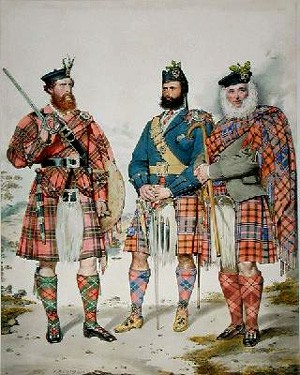 Weiner has concluded that, for the liberal state to thrive and continue to deliver on its promise of individual freedom and autonomy, it must do a better job of doing the things the clan has always done better. He suggests that the state “pursue policies that moderate economic inequality,” “provide space for the flourishing of voluntary civil society organizations that provide opportunities for solidarity,” and “ensure that individuals have fair opportunities to exercise their autonomy within the marketplace,” whatever that means.
Weiner has concluded that, for the liberal state to thrive and continue to deliver on its promise of individual freedom and autonomy, it must do a better job of doing the things the clan has always done better. He suggests that the state “pursue policies that moderate economic inequality,” “provide space for the flourishing of voluntary civil society organizations that provide opportunities for solidarity,” and “ensure that individuals have fair opportunities to exercise their autonomy within the marketplace,” whatever that means.
At first glance, his suggestions sound OK, if you’re into that whole “saving the modern liberal state” thing.
However, after a closer look, they quickly become unworkable. He is also overindulgent of the fictions of the modern State, and he barely mentions the biggest elephants in the room.
When the State pursues policies that moderate economic inequality, to do so, it must become more nationalistic — more clannish, even — not more economically libertarian. A chief contributor to economic inequality in America is surely the ability of corporations, wealthy individuals, even small businesses to undercut American labor and outsource it to foreigners. A little more economic protectionism and certain degree of nationalistic isolationism might go a long way in the long term, but would be damaging to “the economy” in the short term. American politicians are necessarily short-term planners, because they are held accountable in the short-term, so the likelihood of American politicians acting to serve the long term good of the nation while cutting off a foreign supply of cheap labor for corporations, wealthy individuals and small business owners in the short term is approximately zero. This is probably why, for all of their populist posturing about getting tough on immigration, and despite widespread popular support for immigration control, conservative politicians almost always fold.
When Weiner says he wants the State to “provide space for the flourishing of voluntary civil society organizations that provide opportunities for solidarity,” that sounds good, but the reality is that the State as it currently exists would end up micromanaging these organizations to the point where no one would actually want to be members of them anyway. The alternative would be the State creating space for organizations which, if left to flourish organically in harmony with human nature, would eventually challenge the authority of the State itself. Surely, no explicitly kin-oriented groups could be encouraged, especially for white people, because that would be racist. No groups that exclude women could be allowed, because that would be sexist. And the more the State intervenes to regulate and sanction the activities of individuals who associate voluntarily, the more laughable this whole idea of individual autonomy within the context of the State becomes.
What Weiner really fails to acknowledge with this suggestion, even though it is implicit in everything he has written, is that opportunities for “solidarity” and truly meaningful group bonding are a threat to the State, which exactly why there isn’t more room for them now.
People already express group solidarity in ways that are acceptable to the state and its corporate sponsors. They become sports fans. They invest money and time and emotional energy in a group identity that revolves around the dramatic but completely inconsequential activities of, usually, a gang of men.
If men put the same amount of time or energy into forming a highly visible organization with ethnic concerns, for example, half of their enthusiastic new members would probably be FBI agents, because that kind of loyalty would threaten the interests of the liberal state by creating an alternative — and clannish — network of support. The power of the liberal state depends on dependency, and as Weiner has noted, even libertarianism depends on it to protect “rights” and “liberties.”
Finally, in his ode to the State, Weiner perpetuates the fiction that the American State is some kind of benevolent expression of the will of its citizen voters, and he all but ignores the most powerful actors in American politics: corporations. Corporations amass enough money to fund, manufacture and distribute the scientific miracles we use on an everyday basis, but they also perpetuate their own amoral existences by using that money to buy and exert influence on the American political system, whether they are American or foreign-based corporations. Because corporations can exert so much more influence on politics than any voter, the modern liberal state has become a tool of corporate interests, not as Weiner idealizes, a guarantor of individual liberty.
The clan, gang or tribe poses an economic threat to corporations by creating alternative support systems, reduced consumption of goods produced extra-tribally, and the possibility of supply-chain disrupting inter-tribal violence or violence against the State. The State will always oppose clannishness because the state responds first to the interests of self-perpetuating legal entities known as corporations, and because the State is, itself, a self-perpetuating legal entity that will, like any fundamentally amoral corporation, act to perpetuate its own survival above all other concerns.
If the State is over-reaching and becoming the biggest threat to the liberties it supposedly protects, as many men with libertarian tendencies now believe, the solution is not a return to the atomized, go-it-alone individualism that ultimately relies on the liberal State. The only viable option is to increase clannishness or tribalism, which Weiner correctly identified as the natural counter to the modern liberal State.
Source: http://www.jack-donovan.com/axis/2014/03/the-clan-vs-modern-state-dependent-individualism/ [6]
Article printed from Counter-Currents Publishing: http://www.counter-currents.com
URL to article: http://www.counter-currents.com/2014/03/the-clan-vs-modern-state-dependent-individualism/
URLs in this post:
[1] Image: http://www.counter-currents.com/wp-content/uploads/2014/03/pioneers.jpg
[2] The Rule of the Clan: http://www.amazon.com/gp/product/125004362X/ref=as_li_ss_tl?ie=UTF8&camp=1789&creative=390957&creativeASIN=125004362X&linkCode=as2&tag=jackdono-20
[3] You know what I’m talking about.: https://www.youtube.com/watch?v=SU0WOZ0jtD4
[4] The Way of Men: http://www.amazon.com/gp/product/0985452307/ref=as_li_ss_tl?ie=UTF8&camp=1789&creative=390957&creativeASIN=0985452307&linkCode=as2&tag=jackdono-20
[5] smooth, derelict spaces: http://www.counter-currents.com/2013/04/deleuze-guattari-and-the-new-right-part-3-capitalism-and-schizophrenia/
[6] http://www.jack-donovan.com/axis/2014/03/the-clan-vs-modern-state-dependent-individualism/: http://www.jack-donovan.com/axis/2014/03/the-clan-vs-modern-state-dependent-individualism/
00:05 Publié dans Traditions | Lien permanent | Commentaires (0) | Tags : clan, clans, traditions, théorie politique, politologie, sciences politiques |  |
|  del.icio.us |
del.icio.us |  |
|  Digg |
Digg | ![]() Facebook
Facebook
vendredi, 14 mars 2014
Spartan Women
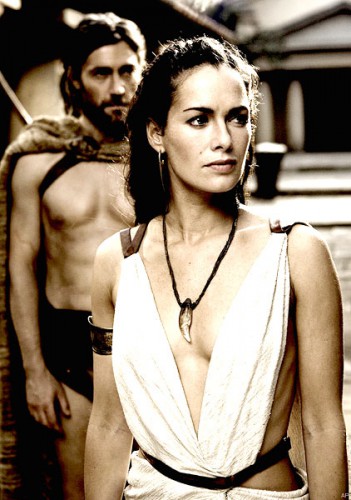
Spartan Women
Ex: http://aristocratsofthesoul.wordpress.com
 Sarah B. Pomeroy
Sarah B. Pomeroy
Spartan Women
Oxford University Press, 2002
Ancient Sparta is known not only for its great warriors, but also for its unusual treatment of women. Further north in democratic Athens, modest women were rarely educated and mostly kept sequestered indoors. But in the militarist state of Sparta, the government insisted that both boys and girls be given an education from childhood. Boys were trained to be future warriors, and women to be the mother of warriors — a task that required a variety of skills.
Sarah B. Pomeroy, a professor at New York’s Hunter College and the Graduate Center at the City University, delves into the unique education and lifestyles of women in Sparta in Spartan Women. Although its primary focus is women, the reader will learn much in the book about the men in this city-state in the south-eastern Peloponnese, as well as about the lives of both men and women in classical Athens.
Women’s Education in Sparta
Compared to other Greek women, Spartans had vastly more free time to do what they wanted. One reason for this was because Sparta was highly dependent on the labor of slaves (called helots), and Spartan citizens were not allowed to engage in most forms of manual labor. This meant that even the women were free from much domestic drudgery. The men of Sparta were full-time warriors, and consequently, Spartan women were usually more cultured than the men. For example, girls were trained in singing, dancing, and playing instruments, and singing competitions often were held between individuals and rival choruses.
Pomeroy says that there is much reason to believe that literacy was common among women in Sparta. There are numerous references to women writing letters to their sons at war (usually these consisted of urging their sons to be brave warriors). And Spartan women also were encouraged in public speaking. In Protagoras, Plato even refers to the women of Sparta and Crete, who take pride in their educations and are skilled in philosophical debate. Common themes for women’s speeches included praising the brave and reviling cowards and bachelors. Another testimony to Spartan women’s education: The Neoplatonist philosopher Iamblichus said there were 17 or 18 women among Pythagoras’ 235 disciples; about one-third of the women were Spartans, while less than 1 percent were Spartan men.
Women could own land in Sparta, and by Aristotle’s time, they owned two-fifths of the land in Laconia. Another privilege of Spartan women, according to Pomeroy: “of all Greek women, Spartans alone drank wine not only at festivals, but also as part of their daily fare.” Although they could not vote, they participated in political campaigns and were said to have much influence over their husbands (according to Aristotle).
Spartan Women and Sports
Spartan Women also details women’s role in sports, another area where they were able to receive training and to excel. Their training was similar to that of boys, but less intense. Women participated in trials of strength, racing competitions, wrestling, discus throwing, and hurling the javelin. Some athletic competitions were held in honor of female deities.
The encouragement of athleticism in women appears to be based on women’s role as mothers. According to Xenophon, Lycurgus (who created Sparta’s constitution) thought that having two physically healthy parents would be more likely to produce healthy offspring.
Young men and women often exercised in the nude, and there was even a “Festival of Nude Youths.” Confirmed bachelors, according to Plutarch, were banned from attending. For the others, it was a chance to view potential marriage partners.
Marriage in Sparta
Spartan women were usually married at 18—later than other Greek women—and the marriages were unusual for Greece at the time. Unlike in Athens, where a 15-year-old girl might marry a man twice her age, Spartan couples were usually close to the same age. The men lived with other men in military groups until age 30, so there was no “nuclear family” until later in life. Husbands and wives were not encouraged to spend a lot of time together, the idea being that absence created stronger passions between the pair, and that the child resulting from a passionate union would be stronger.
The marriages in Sparta were “mostly monogamous.” Although couples were married, it wasn’t uncommon for a woman to have another man’s child than her husband’s, if the man could persuade the husband to allow it. As the population declined, men began fathering children with the helots (the children would be partial citizens); but the consequence was that their legitimate wives began having fewer children. There appears to have been no penalty for adulterous women, like in other parts of Greece where they could be punishable with death.
The Importance of Motherhood
Spartan Women spends many pages describing the role of motherhood in Sparta, since being a mother (particularly the mother of a brave warrior) was the highest honor for women. The only women who were permitted gravestones were priestesses and those who died in childbirth. Women spent much of their time actually involved with their children, since slaves did many of the domestic chores and families were provided with rations of food by the state. Women did work, but it was more as managers than as servants. Before the decline of Sparta, greed was considered a vice, so women’s pursuits were more centered on the arts and their children rather than accumulating material things. In fact, Spartan women were forbidden to wear gold or use cosmetics.
Because they were so involved with their children’s upbringing, women felt very responsible for their children’s successes (and failures) in life. Many of these attitudes can be found in Plutarch’s Sayings of Spartan Women, where he recounts women disowning and even killing cowardly sons.
One of Pomeroy’s most interesting discoveries involves the practice of infanticide. It’s a well-documented fact that deformed or weak babies would be thrown into a chasm on Mount Taygetos, a form of eugenics that ensured a strong military for the state, and that only worthy candidates would be awarded the land and education that was the right of every Spartan citizen. Pomeroy presents a valid case that female babies were not put to the same scrutiny as the males (except for obvious physical deformities). Not all male babies were capable of being warriors, but even the weakest female baby could grow into a mother of warriors.
Women and Religion in Sparta
Unlike most societies in ancient Greece, the private family religious cult was virtually unknown in Sparta. There are several main reasons for this: The first is because there was such an emphasis on community, so primary loyalty was to the state not the family. The militaristic nature of Sparta meant that transcendent values and actions were more important than biological ties (as evidenced by the willingness to kill family members). And finally, since married couples lived apart until the man was 30, and since children went away from home to be educated at a young age, the “family” as we think of it today was never very solidified.
Religion was important to women in Sparta, however. The popular cults for women included those of Dionysus, Eileithyia (a fertility goddess), Artemis, Hera, Helen of Troy, Demeter, Apollo, Athena, and Aphrodite. Spartan Women goes into details about each of these cults, and also discusses the role of women priestesses at various periods in the city-state’s history.
* * *
Spartan Women is scholarly and well-researched, yet written in an easy-to-understand style for a general audience. My only complaint is that much of the information is repeated at many places throughout the book — however, it is evidence of thorough research and ensures that you can read any chapter and receive all of the relevant information. I’d highly recommend it to anyone interested in the history of either Sparta or Athens, women’s roles in traditional societies, and women’s roles in pagan religions.
00:17 Publié dans Traditions | Lien permanent | Commentaires (0) | Tags : tradition, sparte, grèce antique, antiquité grecque, hellénisme, antiquité hellénique, antiquité classique, ti |  |
|  del.icio.us |
del.icio.us |  |
|  Digg |
Digg | ![]() Facebook
Facebook
Peut-on reconstituer les mythes du Paléolithique supérieur?
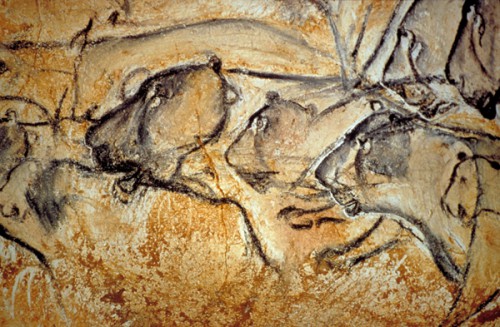
Julien d'Huy*
Ex: http://metamag.fr
00:05 Publié dans archéologie, Traditions | Lien permanent | Commentaires (0) | Tags : mythes, mythologie, paléolithique, paléolithique supérieur, archéologie, paléontologie, préhistoire |  |
|  del.icio.us |
del.icio.us |  |
|  Digg |
Digg | ![]() Facebook
Facebook
jeudi, 13 mars 2014
Evola on Meditation
Evola on Meditation: Four Techniques for Controlling the Thoughts
Ex: http://aristocratsofthesoul.wordpress.com
Julius Evola’s guide to Theravāda Buddhism, The Doctrine of Awakening, is divided into two sections. The first part covers the theories and doctrines of primitive Buddhism, and the second half delves into practical techniques for the disciple. (See my review of The Doctrine of Awakening.)
These practical techniques give the modern-day disciple a detailed guide from a trusted source, for Evola relies solely on the teachings of the Buddha and his disciples (unlike modern-day Buddhist guides for the layman, which tend to ignore certain ideas).
This post highlights Evola’s instructions for the “four instruments” that can help control the thought. Mental control must be the first urgent concern of a disciple, for “in its fluid, changeable, and inconsistent character, normal thought reflects, moreover, the general law of samsāric consciousness” (pg. 109).
According to Buddhist doctrine, thought is located in the “cavern of the heart,” meaning that it isn’t merely a mental or psychological process. Thus, the entire body must be engaged in its control. Rather than “forcing” oneself into a false mental control, Evola says one must:
simultaneously, proceed to an act of conversion of the will and of the spirit; interior calm must be created, and one must be pervaded by intimate, sincere earnestness. (pg. 109)
Based on this description, it can be suggested that the disciple contact a metaphysical energy to help manifest the will and spirit in order to better control the thoughts and other aspects of samsāric existence.
The result of mental control is a state called appamada, which means “conscientious” or “concern.” This is the state of consciousness in which one is master of oneself, by virtue of being centered in oneself. Rather than letting your thoughts control you or run wild, it is the “first form of entry into oneself, of an earnestness and of a fervid, austere concentration” (pg. 110). According the Max Muller, appamada forms the base of every virtue. The being who possesses appamada is said to not die, while those who let their thoughts run wild are as if already dead:
From his heights of wisdom he will look down on vain and agitated beings, as one who lives on a mountaintop looks down on those who live in the plains. (pg. 110)
All of this requires an incredible strength of will. Control of the thoughts should be the first step in developing the will and control required for the path of awakening. Here are the four techniques (“instruments”) that can be used to control the thoughts:
The First Instrument: Substitution
This technique should be used when harmful and unworthy thoughts arise–those that are manifestations of the asava, that is, thought-images of craving, aversion, or blindness. When these thoughts arise, one should replace them with a beneficial idea. This beneficial thought will dissolve the harmful one and in the process, “the intimate spirit will be fortified, will become calm, unified, and strong.”
There are several characteristics of an unworthy thought. Basically, any thought that encourages desires, cravings, errors in thinking (i.e., thoughts not in keeping with the Four Noble Truths and Noble Eightfold Path), and thoughts that serve to bind the thinker to the world could all be said to be unworthy. Here is a description:
That, whereby fresh mania of desire sprouts and the old mania is reinforced; fresh mania of existence sprouts and the old mania is reinforced; fresh mania of error sprouts and the old mania is reinforced.
Part of this first technique involves creating a “chain of beneficial thoughts.” When a thought of “ill will or cruelty” arises, here is what one should think:
It leads to my own harm, it leads to others’ harm, it leads to the harm of both, it uproots wisdom, it brings vexation, it does not lead to extinction, it leads to self-limitation.
If this process of thought-replacement is performed with sufficient sincerity and intensity, then the harmful thought will dissolve.
The Second Instrument: ‘Expulsion Through Horror or Contempt’
This practice involves getting rid of harmful thoughts by associating them with things that fill you with disgust and loathing. Evola cites a simile for the technique from a Buddhist text:
‘Just as a woman or a man, young, flourishing and charming, round whose neck were tied the carcass of a snake, or the carcass of a dog, or a human carcass, would be filled with fear, horror, and loathing,’ so, the perception of the unworthy character of those images or thoughts should produce an immediate and instinctive act of expulsion, from which their dispersion or neutralizing would follow. Whenever an affective chord is touched, then by making an effort one must be able to feel contempt, shame, and disgust for the enjoyment or dislike that has arisen. (pg. 111)
Evola is adament that this repulsion should not be an act of struggling, but should arise naturally from a sense of superiority over states of mind that are unworthy. One should be filled with an “earnestly lived sense of the ‘indignity’ and irrationality of the images and inclinations that appear” (113).
The Third Instrument: Dissociation
The third technique for controlling thoughts is to not become attached to them–simply ignore them. Evola recounts a simile for this technique as well:
As a man with good sight, who does not wish to observe what comes into his field of view at a particular moment can close his eyes or look elsewhere. When attention is resolutely withheld, the images or the tendencies are again restrained. (pg. 112-113)
Evola cautions that the practitioner should be careful to not merely “chase away” a thought–doing so could have the opposite effect of causing the thought to come back even stronger. One must instead have the strength of will to not even see or acknowledge the thought.
This practice is especially useful for a normal but active state of mind (rather than when obsessed with a particular thought). This is the “monkey mind” referred to by Buddhists, in which a man is merely a passive participant of the images, emotional states, and thoughts that overtake him. Evola says these “psychoaffective aggregates of fear, desire, hope, despair, and so on, fascinate or hypnotize [the] mind, subtly tying it, they ‘manipulate’ it by their influence and feed on its energies like vampires” (pg. 113).
The Fourth Instrument: Gradual Dismemberment
The fourth technique is the practice of making the thoughts vanish, one after the next. It is a means of stopping desire by analyzing it down to its roots, so that it disappears. By examining the reasons behind every thought, behavior, and desire, a person can effectively halt any obsession.The simile is:
Just as a man walking in haste might think: ‘Why am I walking in haste? Let me go more slowly’ and, walking more slowly, might think: ‘But why am I walking at all? I wish to stand still’ and, standing still, might think: ‘For what reason am I standing up? I will sit down’ and, sitting down, might think: ‘Why must I only sit? I wish to lie down’ and might lie down; just so if harmful and unworthy thoughts, images of craving, of aversion and of blindness, again arise in an ascetic in spite of his contempt and rejection of them, he must make these thoughts successively vanish one after another.’ . . . [this way considers] them with a calm and objective eye one after another. (pg. 113)
This practice is based on what Buddhists texts call “the conditioned nature of desire.” This refers how a chain of thoughts is created, such as an obsession that feeds itself, but that can be broken if the conditions it depends and feeds upon are broken.
Direct Action (The ‘Fifth’ Instrument)
This technique is advised if none of the four instruments will work. The method is to clench the teeth and press the tongue hardly against the roof of the mouth (the palate) and, with your will, “crush, compel, beat down the mind.” The simile is:
As a strong man, seizing another weaker man by the head or by the shoulders, compels him, crushes him, throws him down. (pg. 114)
The same precaution applies for this technique as the others: It must not be performed from a place of weakness, but from a place of superiority. Evola says the practitioner must be able to call on the illumination and energy that exists outside of the samsāric current. Only then, he writes, ”is there no danger that the victory will be merely exterior and apparent, and that the enemy, instead of being destroyed, has disengaged and entrenched himself in the subconscious” (pg. 114).
* * *
For more on the four instruments, see Evola’s Doctrine of Awakening. For a general background on the Buddhist theories behind these instruments, see my review of The Doctrine of Awakening.
00:05 Publié dans Philosophie, Traditions | Lien permanent | Commentaires (0) | Tags : julius evola, tradition, traditionalisme, philosophie |  |
|  del.icio.us |
del.icio.us |  |
|  Digg |
Digg | ![]() Facebook
Facebook
samedi, 08 mars 2014
Essenzialità e proporzione nella visione del mondo indoeuropea

Essenzialità e proporzione nella visione del mondo indoeuropea
Dalle celebri opere dell’arte greco-romana, fondamentali per l’immaginario della cultura occidentale, riaffiora una visione del mondo che fa della chiarezza, dell’essenzialità e della proporzione razionale delle forme il proprio fulcro. La grande arte classica greca non è assolutamente concepibile, a nostro parere, come semplice atto politico-culturale volto in sostanza ad aumentare il prestigio di una determinata polis e a legittimarne il potere, o ancora peggio come finzione ornamentale e ludibrio dei sensi. Un posto centrale nella visione del mondo dei popoli indoeuropei, pertanto, lo occupano senz’altro i concetti di “Forma” e “Limite”. In greco queste idee erano espresse dai termini “Peras” (che significa per l’appunto forma, limite) e “Metron” (misura).
00:05 Publié dans Philosophie, Traditions | Lien permanent | Commentaires (0) | Tags : traditions, indo-européens, philosophie |  |
|  del.icio.us |
del.icio.us |  |
|  Digg |
Digg | ![]() Facebook
Facebook
vendredi, 28 février 2014
Esquilino in maschera!
00:05 Publié dans Evénement, Traditions | Lien permanent | Commentaires (0) | Tags : événement, carnavals, italie, folklore, rites, traditions |  |
|  del.icio.us |
del.icio.us |  |
|  Digg |
Digg | ![]() Facebook
Facebook
lundi, 03 février 2014
L'hiver chez les anciens scandinaves
L'hiver chez les anciens scandinaves
Joëlle Delacroix *
Ex: http://www.metamag.fr

00:05 Publié dans Traditions | Lien permanent | Commentaires (0) | Tags : yuletide, solstices, solstice d'hiver, wintersonnewende, scandinavie, folklore, traditions, mythologie, mythologie nordique, mythologie scandinave, monde nordique, fêtes solsticiales, fêtes, fêtes traditionnelles, paganisme, fêtes païennes |  |
|  del.icio.us |
del.icio.us |  |
|  Digg |
Digg | ![]() Facebook
Facebook
vendredi, 31 janvier 2014
L’ordine Templare e la Tradizione europea
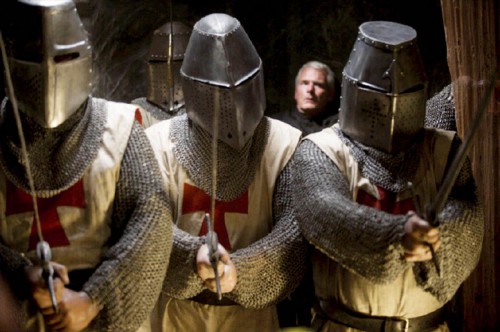
L’ordine Templare e la Tradizione europea
È questo un periodo storico molto intenso, in cui gli eventi che viviamo portano la nostra memoria indietro nel tempo, alla storia più antica; andiamo indietro alla ricerca di un nesso, una ragione, che possa giustificare un presente difficile da accettare.
Ci chiediamo il perché le cose, oggi, siano arrivate a questo punto e perché il mondo abbia perduto quella memoria delle nostre origini, che ci aveva portato così in alto nella concezione della vita.
Un pensiero ricorrente da tempo mi gira nella testa, nato dal mio modo di vedere la storia con un’ottica di revisione, differente rispetto a come ci è stata insegnata a scuola. Da sempre, ho anche avuto una grande passione per la storia e le vicissitudini dell’Ordine dei Cavalieri del Tempio, conosciuti come “i Cavalieri Templari”; sin da bambino, come molti, subivo il fascino dei guerrieri rossocrociati. Una volta cresciuto, e posata la spada di legno, mi sono messo a leggere e studiare tutto quello che era stato scritto su di loro, sia di buono che di meno buono, per rimettere insieme le idee ed essere in grado di trarne dei concetti che andassero al di là delle solite supposizioni.
A tutti la storia dei Templari è conosciuta per due cose fondamentali: il particolare ed affascinante connubio tra il monaco ed il guerriero e la cancellazione ingloriosa dell’ordine legata al processo che mise fine alla sua esistenza nel 1313. Su questi due argomenti sono stati scritti una valanga di romanzi fantasticando sul presunto tesoro nascosto dai Monaci e mai trovato da Filippo IV re di Francia e sul magico segreto sapienziale che si sarebbe perduto, o segretamente tramandato, fino ad oggi e che avrebbe generato tutta quella mistica ideologica che si raggruppa sotto il nome di “templarismo”.
Non voglio, a parte qualche accenno dovuto, in questa sede, mettermi ad approfondire troppo la storia dell’Ordine monastico, narrando della sua costituzione e delle magnifiche imprese compiute in Terra Santa, né tantomeno voglio mettermi a revisionare il terribile processo che fu costruito contro di loro da Filippo il Bello con l’abile aiuto del Nogaret, e la presunta complicità passiva di Clemente V.
Voglio invece mettere a fuoco una questione, meno visibile, che per certi motivi, è legata alla storia successiva dell’Europa fino all’era attuale.
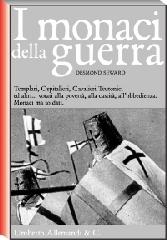 I Templari, per quelle che sono state le idee che hanno portato alla costituzione dell’ordine monastico guerriero e per quelle che sono state le loro opere nei due secoli di vita dell’ordine, non sono stati solo un gruppo di monaci, armati per combattere per la libertà della terra santa dai popoli mussulmani. Il loro contributo alla difesa della terra Santa è stata, senza dubbio, di vitale importanza, fino alla caduta di Acri del 1291, che segnò la fine del Regno di Gerusalemme, ma la loro presenza diffusa in tutta Europa avrebbe lasciato una traccia profonda e indelebile nell’oppressiva presenza della religione cattolica e nel rigido assolutismo del sistema Feudale che regnava sovrano in quel periodo, anche se la prematura soppressione dell’Ordine ne limitò di molto la portata.
I Templari, per quelle che sono state le idee che hanno portato alla costituzione dell’ordine monastico guerriero e per quelle che sono state le loro opere nei due secoli di vita dell’ordine, non sono stati solo un gruppo di monaci, armati per combattere per la libertà della terra santa dai popoli mussulmani. Il loro contributo alla difesa della terra Santa è stata, senza dubbio, di vitale importanza, fino alla caduta di Acri del 1291, che segnò la fine del Regno di Gerusalemme, ma la loro presenza diffusa in tutta Europa avrebbe lasciato una traccia profonda e indelebile nell’oppressiva presenza della religione cattolica e nel rigido assolutismo del sistema Feudale che regnava sovrano in quel periodo, anche se la prematura soppressione dell’Ordine ne limitò di molto la portata.
Nell’idea iniziale dei suoi ideatori l’ordine fu creato per questo! Per sconvolgere il feudalesimo e per generare una spinta spirituale nei popoli d’Europa, tale da creare un “nuovo ordine mondiale” mosso dalla Tradizione, con l’Europa al centro, come un’unica Nazione e unico contenitore di idee ed identità di razza, un vero Sacro romano Impero, ben oltre il concetto pseudo-cristiano, che aveva portato Carlo Magno a compiere gli eccidi di massa per fondare un Europa sotto il giogo della religione Cattolica. L’approvazione e la supervisione della chiesa di Roma, erano il punto di partenza irrinunciabile. Almeno queste erano parte delle idee che spinsero Bernardo da Chiaravalle (uno dei Dottori della Chiesa più controversi del Cristianesimo) a sostenere la fondazione dell’ordine, travasandovi la spiritualità Cistercense e mettendo in essere, un’opera di promozione pubblicitaria e finanziaria, prima e unica nel suo genere.
È nel 1118 che Ugo De Payns, nobile francese , 19 anni dopo la conquista di Gerusalemme decise di chiedere al Re di Gerusalemme Baldovino II l’autorizzazione a costituire un gruppo di cavalieri devoti alla Madonna per dedicare la loro vita di povertà e astinenza alla difesa dei Pellegrini sulle strade per la terra santa. Baldovino concesse loro alcune stanze del palazzo Reale e successivamente di insediarsi nel sito dove sorgeva il Tempio di Re Salomone, allora sede delle rovine della Moschea di al Aqsa, per stabilirvi la loro sede; da questo episodio la costituzione vera e propria dell’ordine si concretizza con il Concilio di Troyes nel 1129, dove i Poveri Cavalieri di Cristo ne ricevono l’investitura con l’adozione della cosiddetta “regola Latina” scritta da San Bernardo in persona.
Ma l’idea deve essere ricercata scavando ancora più a fondo, nelle vicende di quel periodo, subito successivo alla conquista di Gerusalemme del 1099. Infatti l’abate dell’Abbazia di Citeaux fondatore dell’Ordine Cistercense nel 1111, Steve Harding di origini anglosassoni, fece avere al monaco Bernardo l’autorizzazione a fondare giovanissimo, il Monastero di Clairvaux.
Il nuovo Ordine Cistercense, di regola Benedettina, prendeva ispirazione dal Cristianesimo anglosassone, diffuso cinque secoli prima da San Colombano, che aveva assorbito molto delle tradizioni e della religiosità druidica. Per questo si può affermare che, tramite il suo fondatore Steve Harding, la religiosità Cistercense risentisse molto della Tradizione anglosassone; ne fanno da testimonianza i luoghi che venivano scelti come sedi delle loro Abbazie, le cosidette salt lines: tracciati sulla superficie terrestre, da sempre considerati di valenza mistica dalle popolazioni pre-Cristiane come i Celti e gli stessi Romani e spesso utilizzati per l’edificazione di santuari e templi di culto pagano.
Anche l’abbazia di Clairvaux era costruita su una salt line longitudinale, non lontano da Troyes, ed il terreno era stato concesso proprio dal Conte Ugo di Champagne che sarà uno dei fondatori dell’Ordine dei poveri Cavalieri del Tempio. Il conte era un caro amico di Andrè de Montbart, zio di Bernardo, che diventerà anch’egli uno dei primi Cavalieri.
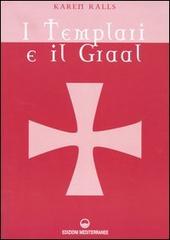 Molte coincidenze legano la fondazione dell’Ordine Templare, gemmazione dell’Ordine Cistercense, alla tradizione anglosassone, ma da qui a supporre il legame di quest’ultimo alle Tradizione druidico pagana, pare cosa difficile; mentre può essere molto più semplice supporlo attraverso il loro operare dei due secoli successivi alla loro fondazione.
Molte coincidenze legano la fondazione dell’Ordine Templare, gemmazione dell’Ordine Cistercense, alla tradizione anglosassone, ma da qui a supporre il legame di quest’ultimo alle Tradizione druidico pagana, pare cosa difficile; mentre può essere molto più semplice supporlo attraverso il loro operare dei due secoli successivi alla loro fondazione.
La devozione mariana di Bernardo e successivamente dell’Ordine Templare, è anch’essa una particolare coincidenza, in quanto il culto Cristiano della Vergine Maria, compare tardi nel Cristianesimo (Consiglio di Efeso 431 d.c.) e sia per l’aspetto iconografico, che per la ricorrenza delle varie festività dedicate, è considerato come derivante dal culto di Iside e Horus dell’antico Egitto.
Per i fondatori dell’Ordine Ugo di Payns, Goffredo de Saint Omer, e soprattutto il Conte Ugo di Champagne, l’occasione delle Crociate era unica e fondamentale: sostenere il Regno di Gerusalemme, da un punto di vista logistico e militare, e nello stesso tempo entrare in contatto con le tracce di civiltà antiche, conosciute solo in maniera indiretta, tramite la cultura della Grecia Classica, allargando i ristretti orizzonti culturali della allora vigente cultura Europea limitati dalla censura cattolica.
Questo è uno degli aspetti dell’ordine poco conosciuto, offuscato in parte dalle eroiche ed esaltanti gesta dei guerrieri monaci, e dai tanti contributi, così importanti ed innovativi che hanno dato, alla vita di quel periodo: primo fra tutti il sistema del credito a distanza, precursore dell’assegno bancario, che permetteva ai pellegrini di percorrere lunghe distanze senza doversi portare dietro il denaro contante che avrebbe fatto di loro bersagli per i predoni. L’influenza dell’Ordine sulla vita quotidiana di quel periodo iniziò a crescere, insieme al loro patrimonio; dopo pochi anni dalla loro costituzione i soldi continuavano ad aumentare e oltre a spenderli per il mantenimento delle guarnigioni in Terra Santa, li prestavano senza fare usura. A quel tempo il prestito con usura era vietato ai Cristiani ma era concesso solo agli Ebrei; per questo motivo i Templari prestavano soldi senza interessi ma solo con delle commissioni di spesa, tanto che il ricorso al prestito Templare fu accessibile a molti e sempre senza conseguenze dannose; da loro fu costituita anche una specie di “cassa Agraria” per permettere ai contadini più poveri di coltivare la terra senza dipendere dalle prepotenze dei feudatari.
Costruirono una loro forza navale, inizialmente nata per necessità logistiche, ma che in breve tempo fece concorrenza a quella delle Repubbliche marinare, arrivando persino a navigare ben oltre i confini del Mediterraneo; organizzavano minuziosamente la vita delle campagne per la gestione delle loro Magioni e Consorterie, migliorando le produzioni agricole, dando casa e lavoro alla povera gente. Costruirono una nuova rete viaria all’interno dell’Europa per consentire ai loro convogli e ai pellegrini stessi di muoversi più velocemente e più tranquillamente verso la Terra Santa, e tra queste la più conosciuta è proprio la via Francigena.
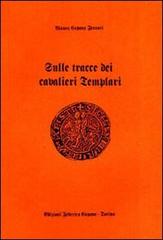 Le popolazioni più povere, contadine ed artigiane, furono notevolmente sostenute dai Templari, sia economicamente che nella qualità della vita, al contrario di come versavano normalmente dove l’ingerenza feudale e la costrizione religiosa erano libere di agire. Un’altra grande innovazione fu la costituzione delle prime Corporazioni di mestiere. Una di queste, la più importante, fu quella de “I figli di Re Salomone”: la corporazione dei Maestri muratori, che si ritiene essere stata l’artefice della costruzione delle prime cattedrali gotiche, che in quel periodo in Europa cominciarono a spuntare come funghi, maestose e uniche, impossibili da costruire con le conoscenze di quegli anni, un miracolo architettonico, farcito abbondantemente di simbologie e riferimenti magici richiamanti religiosità antiche.
Le popolazioni più povere, contadine ed artigiane, furono notevolmente sostenute dai Templari, sia economicamente che nella qualità della vita, al contrario di come versavano normalmente dove l’ingerenza feudale e la costrizione religiosa erano libere di agire. Un’altra grande innovazione fu la costituzione delle prime Corporazioni di mestiere. Una di queste, la più importante, fu quella de “I figli di Re Salomone”: la corporazione dei Maestri muratori, che si ritiene essere stata l’artefice della costruzione delle prime cattedrali gotiche, che in quel periodo in Europa cominciarono a spuntare come funghi, maestose e uniche, impossibili da costruire con le conoscenze di quegli anni, un miracolo architettonico, farcito abbondantemente di simbologie e riferimenti magici richiamanti religiosità antiche.
Sono davvero innumerevoli le innovazioni gestionali e tecnologiche che vennero introdotte in Europa per la gestione delle loro proprietà rurali e immobiliari; si era creata una sorta di catena di trasmissione che importava “nuova conoscenza e tecnologia” dalla Terra Santa per migliorare il sistema di produzione e di insediamento sociale in Europa, il profitto così ricavato veniva speso in parte per mandare rifornimenti come armi, cavalli e vettovaglie, alle guarnigioni di stanza a Gerusalemme, mentre il rimanente veniva dato in prestito o ri-investito in Europa.
La loro presenza cominciò a divenire molto scomoda, e ad essere mal vista dai feudatari locali, inoltre il loro patrimonio attirava l’attenzione di Sovrani senza scrupoli. Ma, dopo la caduta di Acri, e la fine del regno di Gerusalemme, una volta perduto il motivo che permetteva loro di rimanere in armi, quello che iniziò a non piacere fu il loro modo di interpretare e vivere la religione Cristiana.
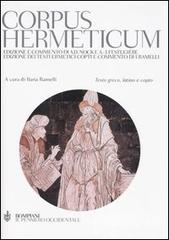 Che i Templari fossero sin dall’inizio un entità molto particolare, già lo si sapeva: “Monaci e Guerrieri” allo stesso tempo; un controsenso che portò lo stesso San Bernardo a dover ideare il concetto di “Malecidio” per sostituirlo a quello di omicidio, permettendo e giustificando la loro azione in armi , naturalmente solo verso gli infedeli. Ma il prolungato contatto ravvicinato con le testimonianze delle civiltà Egiziane antiche e la conoscenza dei loro aspetti più reconditi, anche attraverso l’interpretazione di queste, fatta dalla cultura islamica, permise loro di venire a conoscenza di un crogiuolo sapienziale antico, proveniente direttamente dalla culla delle civiltà medio orientali, la stessa che fu all’origine del rinascimento fiorentino con la traduzione del Corpus Hermeticum da parte di Marsilio Ficino nel successivo quindicesimo secolo.
Che i Templari fossero sin dall’inizio un entità molto particolare, già lo si sapeva: “Monaci e Guerrieri” allo stesso tempo; un controsenso che portò lo stesso San Bernardo a dover ideare il concetto di “Malecidio” per sostituirlo a quello di omicidio, permettendo e giustificando la loro azione in armi , naturalmente solo verso gli infedeli. Ma il prolungato contatto ravvicinato con le testimonianze delle civiltà Egiziane antiche e la conoscenza dei loro aspetti più reconditi, anche attraverso l’interpretazione di queste, fatta dalla cultura islamica, permise loro di venire a conoscenza di un crogiuolo sapienziale antico, proveniente direttamente dalla culla delle civiltà medio orientali, la stessa che fu all’origine del rinascimento fiorentino con la traduzione del Corpus Hermeticum da parte di Marsilio Ficino nel successivo quindicesimo secolo.
Una conoscenza infinita derivò dall’apertura di questo scrigno, solo in piccola parte assorbito dalle popolazioni islamiche, ma mai, fino ad allora, interamente reso disponibile; e cosi la loro apparente religiosità Fideistica di elevata spiritualità si mutò, lentamente ed inevitabilmente, in Gnosticismo, in una religiosità antica e in una spiritualità esoterica poco tollerabile per quei tempi.
Entrarono in contatto con i loro stessi nemici, gli islamici, e con loro scambiarono idee e conoscenza, e da quel momento in poi , le cose cominciarono a cambiare radicalmente: se inizialmente avevano seguito le regole, e si erano attenuti al loro status di monaci cristiani, in Europa il loro ora et labora diventò un lavorare per cambiare il mondo di allora: tentare di cancellare quanto era stato costruito della dinastia Carolingia , che aveva impiantato con la forza la confessione Cristiana su tutti i popoli dell’Europa Romana e aveva schiacciato la Tradizione con la barbarie dell’ordine feudale.
È evidente , a questo punto, che vi era un piano ben determinato, sin da prima della costituzione dell’Ordine, un piano con un progetto smisurato: riportare l’Europa alla sua essenza precristiana, prima del giogo Carolingio, e ridare a tutte le genti Europee la dignità di popoli liberi in totale armonia con la loro terra.
Lo stesso spirito guerriero dei Templari si incarnava perfettamente, in un periodo in cui le Crociate infiammavano le anime di tutte le genti, dal semplice pellegrino, al vescovo fanatico fino al guerriero più desideroso di gloria eterna. I Templari indossarono volentieri l’abito dei guerrieri religiosi, per affrontare la gloriosa morte in battaglia sul suolo sacro di Gerusalemme, ponte terreno verso l’aldilà. Una guerra santa per combattere in nome del divino vincendo la morte stessa. Lo stesso Bernardo da Chiaravalle celebrò questo aspetto del sacrificio in nome di Dio con la sua “De Laude nuova Militia”, che funzionò come il miglior bando di arruolamento di tutti tempi: Bernardo aveva toccato quei tasti nascosti che risvegliarono i desideri più ancestrali degli uomini d’arme di quel periodo e non solo appartenenti alla nobiltà più esclusiva, ma anche al popolo più umile.
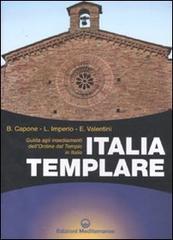 Vi era in seno all’Ordine una gerarchia molto sviluppata che andava dal Gran Maestro fino al servitore laico, ma all’interno di questa gerarchia , gli obbiettivi e le finalità dell’Ordine più reconditi erano gestiti da una ristretta cerchia di saggi: un gruppo di “Superiori Incogniti” che stabilivano le regole e comandavano sopra a tutti; questo gruppo di Saggi avevano il compito di tramandare quello che era lo scopo principale per cui l’Ordine stesso era stato costituito e di cercare le strade e le conoscenze per raggiungerlo, il tutto senza destare troppi sospetti.
Vi era in seno all’Ordine una gerarchia molto sviluppata che andava dal Gran Maestro fino al servitore laico, ma all’interno di questa gerarchia , gli obbiettivi e le finalità dell’Ordine più reconditi erano gestiti da una ristretta cerchia di saggi: un gruppo di “Superiori Incogniti” che stabilivano le regole e comandavano sopra a tutti; questo gruppo di Saggi avevano il compito di tramandare quello che era lo scopo principale per cui l’Ordine stesso era stato costituito e di cercare le strade e le conoscenze per raggiungerlo, il tutto senza destare troppi sospetti.
L’arroganza di un Re smanioso di affermare il suo potere assoluto già da tempo voleva cancellare la loro scomoda presenza sul suolo francese, e la sua volontà di arricchirsi con i loro immensi patrimoni, oltre che l’obbiettivo di cancellare un grosso debito, creò il movente. Come lui la chiesa Romana, non aveva ancora realizzato, realmente quali fossero gli scopi dell’Ordine, direttamente ostili ad entrambi.
Tutto inizia nel 1303 quando una bolla di scomunica nei confronti di Filippo IV (della dinastia Capetingia) detto il Bello viene emessa dal Pontefice Bonifacio VIII, e scatena la reazione dell’arrogante sovrano. Ad Anagni il Papa venne maltrattato ed imprigionato fino a morirne un mese dopo. Filippo impose il trasferimento della Curia papale nella sede Francese di Avignone; in quella sede pretese che Bonifacio VIII fosse dichiarato eretico e simoniaco dal suo successore Clemente V e nel 1307 usò la scomoda condanna come merce di scambio per poter agire contro l’Ordine Templare che fu accusato di Eresia.
Le motivazioni furono molte (furono messi in piedi 124 capi di accusa) ma una delle più eclatanti, tra le accuse di sodomia e vilipendio alla croce, fu quella che riguardava l’adorazione di un idolo demoniaco che fu paragonato a Satana in persona, il famoso “Baffometto” il cui nome riprendeva in chiave ironica il nome del profeta degli infedeli. In realtà il processo non riuscì veramente a dimostrare l’adorazione di questo strano idolo, salvo qualche caso in cui qualcuno dei processati disse di aver visto una figura baffuta tra le icone delle chiese Templari. Il Baffometto, se sia stato oggetto di adorazione dei Cavalieri, non si può dimostrare con certezza, ma il significato di questa figura non ha niente a che vedere con il diavolo dei Cattolici, perché rappresenterebbe un simbolo esoterico di alto livello iniziatico, coniugante gli opposti alchemici e riferibile alla tradizione Ermetica più ortodossa; per cui se per caso fosse stato un simbolo dei Templari, di certo non dimostrerebbe altro che il loro essere un ordine iniziatico in tutto e per tutto!
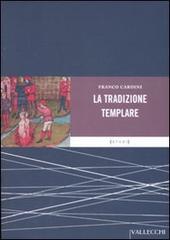 All’alba del Venerdì 13 Ottobre del 1307 iniziò la persecuzione dei cavalieri Gerosolimitani per la brama dei loro tesori, ma tutto quello che successe nei sette anni successivi non fu altro che una lucida scelta della Chiesa di nascondere una scomoda realtà; tanto che in quegli stessi anni fu creata appositamente per l’occasione la “Santa Inquisizione” per perseguire un’eresia ritenuta pericolosa. Sono famosi i processi di Parigi, Londra, Cipro, Firenze dove le rare assoluzioni venivano cancellate con ricatti ai tribunali e torture agli accusati. Clemente V nella conclusione del processo nel 1313 al Concilio di Vienne con l’enciclica Vox in Eccelso, in un ultimo sussulto di dignità clericale, o forse perché non aveva ancora capito cosa si nascondesse veramente dietro l’Ordine rossocrociato, non volle cancellare l’Ordine Templare, ma ne decretò solo la sospensione; la reazione di Filippo il Bello a questo inatteso finale fu, nel 1314, di far mettere sul rogo di Parigi l’ultimo dei Gran Maestri dell’ordine Jaques de Molay.
All’alba del Venerdì 13 Ottobre del 1307 iniziò la persecuzione dei cavalieri Gerosolimitani per la brama dei loro tesori, ma tutto quello che successe nei sette anni successivi non fu altro che una lucida scelta della Chiesa di nascondere una scomoda realtà; tanto che in quegli stessi anni fu creata appositamente per l’occasione la “Santa Inquisizione” per perseguire un’eresia ritenuta pericolosa. Sono famosi i processi di Parigi, Londra, Cipro, Firenze dove le rare assoluzioni venivano cancellate con ricatti ai tribunali e torture agli accusati. Clemente V nella conclusione del processo nel 1313 al Concilio di Vienne con l’enciclica Vox in Eccelso, in un ultimo sussulto di dignità clericale, o forse perché non aveva ancora capito cosa si nascondesse veramente dietro l’Ordine rossocrociato, non volle cancellare l’Ordine Templare, ma ne decretò solo la sospensione; la reazione di Filippo il Bello a questo inatteso finale fu, nel 1314, di far mettere sul rogo di Parigi l’ultimo dei Gran Maestri dell’ordine Jaques de Molay.
Profondo fu il cordoglio del mondo colto di quell’epoca; perfino il Divino Poeta, direttamente coinvolto come appartenente laico dell’Ordine, celebrò il suo sdegno nella sua opera più celebre mettendo all’inferno entrambi i protagonisti, Papa e Re.
Negli anni successivi i numerosi cavalieri sopravvissuti si riorganizzarono in altri ordini monastici come i Cavalieri dell’ordine di Cristo in Portogallo o in sette segrete delle quali molte hanno rivendicato l’origine templare, ma realmente il proseguo della loro opera si è in buona parte perduto, nonostante si sia voluto intravedere nelle varie correnti di pensiero future, dall’umanesimo alla riforma protestante all’illuminismo.
La vera distruzione dell’ordine in realtà avviene nei decenni successivi, durante il pontificato di Giovanni XXII, successore di Clemente V, un Papa cultore di Alchimia ed Esoterismo, che venuto in stretto contatto con alcuni segreti dell’ordine dei Templari, dopo la sua sospensione, ebbe a reagire con estrema violenza decretandone la definitiva cancellazione con la Damnatio Memoriae, una condanna che veniva riservata solo alle eresie più pericolose.
Fu un definitivo colpo di spugna su un periodo storico durato due secoli, durante il quale un ordine monastico, derivante dall’evoluzione dell’alta e controversa spiritualità dei Cistercensi con l’aiuto di una nobiltà francese che voleva recuperare il retaggio del proprio passato, si fondava con l’impegno di pochi illuminati come distillato della Tradizione Europea per diventare un ordine monastico-guerriero, arrivando a scrivere perfino le regole della futura cavalleria. Un periodo nel quale l’elite spirituale dell’ordine aveva modo di entrare in contatto con realtà culturali e religiose fino a quel momento avversate e sconosciute, assorbendo conoscenze antiche da civiltà dimenticate, trasformando la religiosità fideistica in una gnosi sapienziale ed esoterica fino cercare di piantarne il seme per un nuovo ordine mondiale, trapiantandolo nell’Europa di allora, dove vigeva l’oppressione Feudale a governo dell’ordine sociale e il dogmatismo della chiesa cattolica, a governo delle coscienze.
“La cancellazione dell’Ordine del Tempio rappresenta la frattura dell’Occidente con la propria Tradizione – una tradizione che era religiosa e guerriera al tempo stesso, mediatrice tra il Potere Temporale e l’Autorità Spirituale.” (Renè Guenon, Autorità spirituale e Potere temporale).
L’opera dei Cavalieri Templari non si è esaurita del tutto dopo la cancellazione dell’Ordine; quello che era stato fatto prima rimane a perpetua testimonianza della loro grandezza, ma quello che hanno continuato a fare dopo, non ha più trovato né pace né favore da parte della Chiesa, come da parte di una società che ha continuato a decadere nei suoi contenuti spirituali fino ai nostri giorni.
Il mondo occidentale contemporaneo ha un’unica speranza per salvarsi dalla disfatta totale alla quale sta andando incontro, oramai da alcuni secoli, ora più rapidamente che mai: la riscoperta della Tradizione attraverso la conoscenza di un sapere che fu così ben difeso fino all’ultimo respiro dai Cavalieri Templari, ma che da allora è rimasto in balia dell’oblio e dall’adorazione dei falsi idoli.
00:05 Publié dans Traditions | Lien permanent | Commentaires (0) | Tags : traditions, tradition, moyen âge, europe, templiers, ordres de chevalerie, chevalerie |  |
|  del.icio.us |
del.icio.us |  |
|  Digg |
Digg | ![]() Facebook
Facebook
jeudi, 23 janvier 2014
Les Argonautes sont un exemple pour le monde d'aujourd'hui
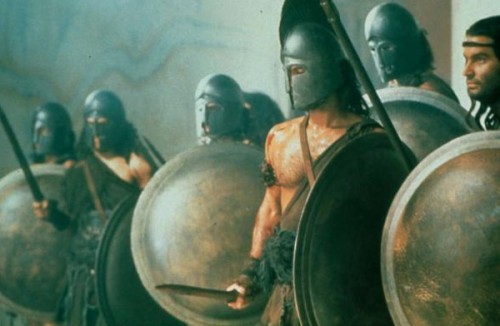
«Les Argonautes
sont un exemple pour le monde d’aujourd’hui,
perdu dans ses calculs mesquins»
Qui n’a entendu parler des 50 héros, menés par Jason, partis pour retrouver la Toison d’or ? Ils sont passés à la postérité sous le nom d’Argonautes (du nom de leur navire L’Argo)…
Entretien avec Dimitris Michalopoulos auteur deLes Argonautes
(Propos recueillis par Fabrice Dutilleul)
Pourquoi les Argonautes fascinent-ils toujours autant ?
Ils nous éblouissent même aujourd’hui, car ils étaient des héros au sens vrai du terme. Ils ont fait l’impossible : ils arrivèrent, en effet, au bout de la Mer noire, enlevèrent la Toison d’or en dépit des monstres qui y veillaient, échappèrent à leurs ennemis farouches, firent le périple de l’Europe et regagnèrent la Grèce via l’océan Atlantique. Autrement dit, ils sont un exemple pour le monde d’aujourd’hui, perdu dans ses calculs mesquins.
Comment êtes-vous parvenus à séparer ce qui appartient à la légende et ce qui appartient à l'histoire ?
En fouillant les sources grecques et latines ainsi que presque l’ensemble de la littérature contemporaine. À mon avis, il suffit de lire attentivement les textes anciens, pour comprendre très bien ce qu’il était vraiment passé pendant le voyage, voire la campagne, des Argonautes.
Pensez-vous avoir fait un livre exhaustif ou y a-t-il encore, d'après vous, des choses à découvrir pour d'autres chercheurs ?
En ce qui concerne les Argonautes, non ! Je ne crois pas qu’il y a des choses à découvrir. En ce qui concerne toutefois les voyages des Anciens dans les océans et leurs campagnes en Amérique, oui… il y a toute une épopée à étudier et à écrire.
Y a-t-il encore un impact du voyage des Argonautes sur la Grèce actuelle… ou sur d'autres pays ?
Impact du voyage des Argonautes sur la Grèce actuelle ? Non, pas du tout (à l’exception, bien sûr, de quelques rares amateurs de l’Antiquité). À vrai dire, la Grèce d’aujourd’hui est plutôt hostile aux sciences de l’Homme, parmi lesquelles l’Histoire est toujours la prima inter pares. Or, c’est différent dans d’autres pays, oui ! En France et en Espagne, mais aussi dans des pays du Caucase, on m’a souvent posé la question : « Pourquoi a-t-on oublié les Argonautes, qui avaient parcouru l’Europe de l’est et laissé des traces presque partout sur les côtes de notre continent ? » Je ne savais quoi répondre, car il me fallait faire toute une conférence sur la situation actuelle de la Grèce, ses liens brisés avec les Hellènes et les Pélasges de l’antiquité etc. Voilà donc pourquoi je me suis mis au travail… et j’ai écrit mon livre sur les Argonautes et leur voyage.
Les Argonautes, Dimitris Michalopoulos, préface de Christian Bouchet, Éditions Dualpha, collection « Vérités pour l’Histoire », dirigée par Philippe Randa, 194 pages, 21 euros.
BON DE COMMANDE
à renvoyer à : Francephi diffusion - Boite 37 - 16 bis rue d’Odessa - 75014 Paris - Tél. 09 52 95 13 34 - Fax. 09 57 95 13 34 – Mél. diffusion@francephi.com
Commande par internet (paiement 100 % sécurisé par paypal ou carte bancaire) sur notre site www.francephi.com.
Je souhaite recevoir :
… ex. de Les Argonautes (21 euros)
00:05 Publié dans Entretiens, Livre, Livre, Traditions | Lien permanent | Commentaires (0) | Tags : tradition, argonautes, traditions, mythologie, grèce antique, hellénisme |  |
|  del.icio.us |
del.icio.us |  |
|  Digg |
Digg | ![]() Facebook
Facebook
samedi, 18 janvier 2014
La fête de la Sainte Lumière
La fête de la Sainte Lumière
(Epiphanie, Ste. Maigre)
par le Dr. COREMANS
Elles sont passées, les douze nuits [de la période solstitiale, ndlr]; le monde souterrain s'est fermé. La terre appartient aux vivants, au présent, à l'avenir; les morts, le passé gîtent dans le sombre empire de Hella. La fête du jour annonce l'espoir, le futur bonheur! Pour quelques heures, les dignitaires, élus la veille, entrent en fonctions. C'est à eux à justifier le choix du hasard, s'ils veulent que le peuple le ratifie vers l'Iostur ou au champ de Mai. En attendant, on se livre à la joie. La Ste Lumière éclaire l'oie du banquet, les cornes à boire se remplissent et se vident bravement! Grimm croit que cette fête était consacrée à Berchta ou Helle, en sa qualité de déité lunaire, à Helle qui brille et qui éclaire au milieu des ténèbres. Tout en fêtant la renaissance du soleil, nos ancêtres ne voulaient pas oublier les bienfaits de l'astre qui préside aux nuits raffraîchissantes de l'été, à la rosée si salutaire aux plantes, après les brûlantes journées estivales. N'omettons pas, en outre, de faire remarquer que si la science nie l'influence de la lune sur les variations du temps, le peuple y croyait et y croit encore partout.
Néanmoins, si l'on témoignait de l'attachement et de la reconnaissance à la bonne déesse, on ne se montrait pas moins sévère à l'égard des génies ténébreux de mort et de destruction sur lesquels elle règne dans les profondeurs de la terre. On vengeait sur eux les outrages qu'ils avaient fait souffrir, pendant six mois, aux déités bienfaisantes de la lumière. C'est ainsi, comme nous l'avons dit, qu'en Italie, la Béfana, représentée sous les traits d'une femme maigre et décharnée, est maltraitée, lapidée et enfin sciée par le peuple, le treizième jour après les fêtes de Noël. Des usages de ce genre se rencontrent aussi dans les contrées méridionales de l'Allemagne, qui avoisinent l'Italie. Il est aussi évident que des réminiscences du paganisme se sont jointes aux terribles détails du martyre de Ste Macre, Mager ou Maigre, dont on célèbre la fête, en Champagne, le jour de l'Epiphanie.
D'après la tradition, cette sainte endura le martyre du temps de la grande persécution des Chrétiens, sous Dioclétien. Elle fut jetée au feu, et, n'en ayant reçu aucun dommage, on lui coupa les mamelles, on la roula sur des morceaux très aigus de pots cassés et ensuite sur des charbons enflammés; enfin, Dieu l'enleva à la cruauté des hommes! Tel est le résumé des rimes populaires que chantent parfois encore les enfants qui, le jour des Rois, parcourent, en Champagne, les villages avec un mannequin figurant une femme et qu'ils disent être l'effigie de Ste. Maigre! Nous voyons, dans cette sainte, une christianisation d'un usage païen qui ne pouvait se maintenir, après la chute du paganisme, que sous une forme nouvelle.
St Mélanie, évêque et confesseur, est pour Rennes, ce que Ste Macre ou Maigre est devenue pour Reims et la Champagne. Les miracles que la voix populaire lui attribue sont innombrables. Comme St. Macaire, il avait, dit-on, le pouvoir de faire parler les morts.
Les habitants des montagnes du Monta-Rosa prétendent qu'un mirage céleste fait quelquefois apercevoir, le jour de l'Epiphanie, la «vallées perdue», dont les souvenirs délicieux vivent dans la tradition de leur contrée alpine. Effectivement, qu'est cette vallée perdue, sinon un pays d'espérance, et la fête du treizième jour n'était-elle pas aussi principalement consacrée à l'Espoir?
Nous cherchons tous et toujours la vallée perdue, mais quel est l'heureux mortel qui la retrouve?
En Flandre comme en plusieurs parties de l'Allemagne, on nomme le jour des Rois: le Grand Nouvel An, et les Tyroliens attribuent à l'eau bénite de ce jour des forces particulières. Ils en aspergent les champs, les étables, les granges, etc. C'est aussi une croyance populaire à peu près générale que les mariages contractés le jour de la Sainte-Lumière sont heureux par excellence. En Brabant et en Flandre, les enfants chantent la veille et le jour des Rois différentes rimes qui paraissent très anciennes et qui ont trait, soit à la Sainte-Lumière soit à la demande d'un nouveau couvre-chef, le vieux s'étant sans doute usé, pendant le cours de l'année antérieure.
Dr. COREMANS.
(ex Etudes sur les mythes, tome I, Les fêtes du Joul, Héliopolis, 1851).
Note sur l'auteur: le Dr. Coremans, né à Bruxelles à la fin du XVIIIième siècle a dû quitter sa ville natale, en compagnie de son père, haut fonctionnaire impérial, à l'arrivée de la soldatesque jacobine dans les Pays-Bas autrichiens (1792). Elevé à Vienne, il y entre à la faculté de droit et s'engage dans les Burschenschaften nationalistes et grandes-allemandes, qui s'opposent au morcellement du monde germanique, confirmé par le Traité de Vienne de 1815. Revenu à Bruxelles, parfaitement trilingue, il reste un légitimiste absolu: sa fidélité politique va à l'Autriche, au cadre germanique et centre-européen plutôt qu'à la dynastie des Habsbourg qui ne veut rien comprendre aux aspirations du peuple à l'unité. Païen dans l'âme, il rédigera une quantité d'études sur les mythes et les traditions populaires; dans bien des domaines de l'ethnologie, il sera un pionnier, mais, depuis, il a été bien oublié.
00:05 Publié dans Traditions | Lien permanent | Commentaires (0) | Tags : tradition, cultes solstitiaux, solstices, épiphanie, sainte maigre, paganisme, traditions |  |
|  del.icio.us |
del.icio.us |  |
|  Digg |
Digg | ![]() Facebook
Facebook
vendredi, 17 janvier 2014
Lugus Longue Main : le dernier livre de Savignac sur la mythologie gauloise
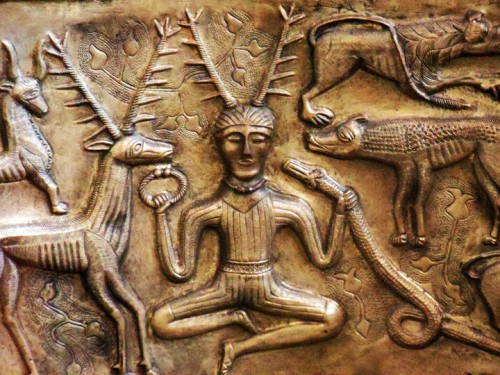
Lugus Longue Main : le dernier livre de Savignac sur la mythologie gauloise
Ex: http://breizhatao.com
BREIZATAO – KELTOURIEZH VIA LE CHEMIN SOUS LES BUIS (10/01/2014) Jean-Paul Savignac est un savant gaulois auprès duquel Astérix et ses comparses apparaissent comme des caricatures qui prolongent l’occultation par la gallo-romanité des richesses de ce pays plus grand et, sans doute, plus civilisé que la France actuelle.
Hier est paru en librairie le livre que Jean-Paul Savignac a écrit, pour les Éditions de la Différence, sur la mythologie gauloise. Des gouaches de Jean Mineraud accompagnent chacun des textes de cet ouvrage.
Ce premier livre, qui raconte la naissance et l’adolescence, en définitive la genèse, du dieu tutélaire de la Gaule, Lougous Longue-Main, inaugure une série d’ouvrages qui ne se limiteront certainement pas aux huit livres d’ores et déjà programmés.
****
« Nous sommes secrètement fiers des Gaulois », m’a dit, un jour, une amie journaliste. Il y a de quoi, bien que nous les voyions à travers le prisme déformant de notre présent. Un mot résume ce qu’ils furent et ce en quoi nous nous reconnaissons en eux, ce grain de folie qui dépasse toutes les philosophies, tous les pragmatismes, tous les dogmes : le panache. Cette qualité chevaleresque exprime leur attitude à l’égard des femmes, d’où procède notre courtoisie, leur désir des beaux tissus et des belles parures d’or, d’où vient notre goût de l’élégance et du raffinement, leur amour du faste partagé, des beaux chevaux, de la belle parole écoutée pour elle-même et vénérée, qui fondent notre culte du Beau. De leur héritage provient également, issu de leur Chaudron de jouvence et d’immortalité, le Graal, ce symbole de l’élan religieux et du dynamisme pétulant de la France.
Leur antiquité quasi fabuleuse satisfait notre rêve de descendre d’ancêtres sortis de la nuit des temps et brusquement entrés dans la lumière de l’histoire, c’est-à-dire de remonter au plus loin, dans le passé du passé, pour nous relier aux dieux, ce dont se prévaut, par exemple, Don Ruy Gomez de Silva fier de montrer à Hernani la galerie des tableaux de ses aïeux, comme tous les nobles du monde, et ce dont s’enorgueillissaient les Gaulois eux-mêmes, tel ce Ouiridomaros qui se targuait d’être issu du Rhin lui-même. Car les Gaulois possédaient eux aussi une antiquité.
Autre joie fière qu’ils nous donnent : nous sentir intimement familiers avec la terre de la Gaule-France qu’ils ont aimée au point d’en nommer les plaines, les rivières, les montagnes et les installations humaines. Si la langue gauloise avait subsisté, elle serait devenue du français. Les toponymes en France le prouvent. Prenons au hasard le nom de Bayeux, admiré pour ses sonorités et sa couleur vieil or par Marcel Proust. C’est le nom gaulois Bodiocasses qui évolue phonétiquement au fil des siècles en Baiocasses pour prendre jusqu’à notre XXe siècle la forme gallo-française de Bayeux. Ainsi en est-il de Vannes (Ouenetia), Rouen (Ratomagos), Dijon (Diouio), Meung (Magidounon), Tonnerre (Tournodouron), Évry (Ebouriacon), Sablé (Sapoialon), Genouilly (Genouliacon), Chambord (Camboritou), Alençon (Alantionon), Toul (Toullon), Niort (Noouioritou), Riom (Rigomagos), Châlons (Caladounon), Nanterre (Nemetodouron), Arles (Arelate), Lyon (Lougoudounon), Paris (Parisii)…
Notre fierté inavouée se fonde encore sur l’admiration que les Gaulois nous inspirent : ils ont versé leur sang pour défendre leur liberté. Pleurons les Gaulois de ce sacrifice sublime — « Morts pour la Gaule » ! — et déplorons amèrement l’infamie de ceux d’entre nous qui ricanent à leur propos, ingrats et ignorants de l’évidence du fait que tout homme a nécessairement des ancêtres ! On n’insulte pas des héros. Les nazis savaient ajouter à l’ignominie de martyriser et de tuer leurs victimes innocentes la perversion de les humilier avant. Ne suivons pas leur exemple. J’ai jadis été frappé par un film qui offrait, aux sons de chants graves que l’on reconnaissait comme étant tibétains, les images d’armes gauloises et d’ossements humains disposés sur un sol herbu. La force incantatoire des voix, transcendant la douceur du paysage entrevu, la sobriété de l’armement épars à même le désastre des os et des crânes, tout ce spectacle lent et terrible inspirait une farouche sympathie pour ceux qui s’étaient battus là. C’était tout ce que pouvait faire une caméra, mais il y avait dans ce travelling quelque chose d’exemplairement évocatoire.
Et puis il y a ce phénomène agréable que nous voyons le Gaulois comme un être joyeux. Le rire gaulois, la bonne humeur : voilà ce que nous ne saurions dénier à nos illustres pères. Sans doute faut-il y voir l’influence de Rabelais, le maître rieur, en la parole duquel nous reconnaissons l’expression la plus libre de notre génie national. C’est que Rabelais est gaulois ! Jehan de Gravot (un de ses pseudonymes) s’honore bien d’avoir écrit des Évangiles gallicques ! Ces Gaulois, nous les devinons plus gaillards que paillards à en croire certaines inscriptions antiques sur pesons de fuseaux qu’ils nous ont laissées. Le rire que leur évocation suscite spontanément en nous, s’il ne trahit pas un plaisir régressif ou une intention railleuse, pourrait être, à mon sens, un écho de leur propre gaieté. Des ancêtres qui font rire ! Nous avons de la chance. Il plaît de penser que leur joie reflétait la félicité des dieux. Les dieux : nous en revenons là. « La nation est toute des Gaulois dans une pleine mesure adonnée aux rites », remâche César.
Avons-nous vraiment hérité d’eux ? Hypocrite question ! Ce sont les mêmes héros, les mêmes martyrs, les mêmes bourreaux, les mêmes victimes qui, pour ainsi dire, se réincarnent. L’héritage de leur langue, fût-elle fragmentaire, est une preuve suffisante de la continuité qui nous relie à eux.
Il faut décaricaturer les Gaulois, les désanathémiser, les débarbariser, les dépolitiser, les débarrasser de tout ce qui a été projeté sur eux. L’ostracisme dont ils sont victimes ne date pas d’hier. Considérés comme vaincus ils ont été abaissés par Rome, dépossédés de leur langue, de leurs usages et de leurs prêtres par l’administration impériale romaine, combattus par le christianisme constantinien. Vilipendés plus tard par les rois de France qui se prétendaient francs, c’est-à-dire d’origine germanique, ils ont été traités en réprouvés.
Des historiens les ont brandis, à la fin du XIXe siècle, comme les drapeaux d’un nationalisme revanchard et, à cause de cela, aujourd’hui, une propagande historique post-nationale, qui plaide pour la « diversité », cherche à les éradiquer de notre mémoire. On a fait d’eux des bouffons sympathiques à travers une bande dessinée pour le moins simplificatrice, qui a toutefois le mérite de les avoir sortis des ténèbres et de nous faire rire. Mais qu’est devenue leur dignité humaine ? Avons-nous envie de rire, quand nous voyons, au musée Bargoin de Clermont-Ferrand, les crânes des Gauloises auxquels adhèrent encore leurs cheveux tressés en une natte unique derrière la tête, comme celle des squaws ? Nous sommes sans doute le seul peuple au monde qui salisse le souvenir de ses ancêtres, alors que nous avons été le seul à les revendiquer pour tels !
Ils ont la vie dure.
Aujourd’hui, nos prédécesseurs de la Gaule sont réduits par une archéologie muette et fossoyeuse à des cailloux, des ossements et de la ferraille qu’elle restaure et place dans des vitrines de palais, plutôt que de se voir ressuscités en tant qu’hommes ; car les hommes ne se définissent pas comme des utilisateurs d’objets, mais d’abord comme des êtres doués de la parole. Qui se soucie de réentendre la parole gauloise ? Qu’avons-nous fait de leur parole ? Qu’avons-nous fait de la Parole ? Les quelque deux mille inscriptions gauloises parvenues jusqu’à nous pourraient donner des éléments de réponses, hélas, elles sont l’affaire de linguistes de bibliothèque avares de leur science.
Le peuple français s’est souvent divisé pour mieux se comprendre. Nous avons su que tout était affaire de dialogue et que notre dualisme apparent aboutissait à la résolution harmonieuse des contraires. Idéalisme chevaleresque et réalisme populaire. Légalité et révolte. Rationalité et imagination : pour Pascal l’imagination est « la folle du logis », pour Baudelaire c’est « la reine des facultés ». Poésie et prosaïsme. Anciens et Modernes. Tradition et modernité. Patriotisme et trahison. Ponts et Chaussées et Eaux et forêts… Pourquoi pas culture gréco-latine et héritage gaulois, voire francité et gallicité ? Le délire des formes de l’art gaulois s’ordonnant selon un impeccable lacis géométrique ne donne-t-il pas l’image d’une réconciliation possible entre deux visions des choses opposées ? Qu’avons-nous à perdre à engager le dialogue avec une origine qui parle ? L’enjeu en est l’émergence de notre obscure identité française. Reprenons le débat, sans arrière-pensées. Ce n’est pas en reniant ce que nous avons foncièrement été que nous contribuerons à renforcer la nécessaire diversité des nations. Le bonheur des hommes a besoin de différence, non d’uniformité. Explorons notre différence ! Pour cela, ne rejetons pas notre secrète nuit intérieure. C’est un trésor.
Refoulés par la civilisation voulue par l’Église, les Rois et la République, les mythes des Gaulois ont perduré souterrainement. Ils gisent dans les contes et légendes, les vieilles chansons, chères à Nerval, les Vies édifiantes, les romans médiévaux et resurgissent dans nos rêves conformément à leur nature immortelle. Si bien qu’il est possible, en ces temps de perte des repères, d’offrir aux lecteurs ces chants premiers inspirés de l’iconographie antique continentale dont le reflet littéraire brille dans les vieux textes insulaires, irlandais et gallois. Ces récits mythiques, les voici restitués dans leur palpitation authentique. Il suffisait d’endosser le manteau du conteur.
Voici des dieux qui ont laissé leurs noms aux terres gauloises, voici leurs exploits épiques, voici leurs figures mystérieusement familières, voici une mythologie toujours pressentie et enfin recouvrée et révélée. Le dieu qui incarne les Gaulois, Lougous Longue-Main, le protecteur de Vercingétorix, traceur de routes, accourt escorté des autres divinités. Le récit de ses aventures, divinement illustré par Jean Mineraud, inaugure la collection LES HOMMES-DIEUX aux Éditions de La Différence. Suivront Argantorota Grande-Reine, Cernounnos Torque-d’Or, Nodons Main-d’Argent, Gobannos Feu-Hardi, Ambactos Corps-Dévoué, Nectanos Gardien-des-Eaux, Ollouidios Roue-du-Monde.
Jean-Paul Savignac
00:05 Publié dans Livre, Livre, Traditions | Lien permanent | Commentaires (0) | Tags : livre, tradition, celtisme, mythologie celtique |  |
|  del.icio.us |
del.icio.us |  |
|  Digg |
Digg | ![]() Facebook
Facebook
dimanche, 22 décembre 2013
The Rites of Manhood: Man’s Need for Ritual

Does modern life ever feel excruciatingly flat to you? A bleak landscape devoid of layers, rhythm, interest, texture?
Are you ever haunted by the question “Is this all there is?”
Have you ever looked at an old photo and felt that the scene held such an inexplicable richness that it seemed you could practically step right into it?
The barren flatness of modern life is rooted in many things, including mindless consumerism, the absence of significant challenges, and the lack of shared values and norms, or even shared taboos to rebel against. But what is the solution?
Many would be quick to say faith, or philosophy, or relationships. All good answers.
But what is it that vivifies beliefs to the extent they can transform your perspective not simply for an hour on Sunday, but also in the mundane moments throughout your week? What can move an understanding of abstract truths from your mind into your very sinews? What can transform superficial ties with others into deep and meaningful bonds?
The answer I would suggest is ritual.
Our modern world is nearly devoid of rituals – at least in the way we traditionally think of them. Those that remain – such as ones that revolve around the holidays – have largely lost their transformative power and are often endured more than enjoyed, participated in as an obligatory going through of the motions. Ritual has today become associated with that which is rote, empty, meaningless.
Yet every culture, in every part of the world, in every era has engaged in rituals, suggesting they are a fundamental part of the human condition. Rituals have even been called our most basic form of technology – they are a mechanism that can change things, solve problems, perform certain functions, and accomplish tangible results. Necessity is the mother of invention, and rituals were born out of the clear-eyed perspective that life is inherently difficult and that unadulterated reality can paradoxically feel incredibly unreal. Rituals have for eons been the tools humans have used to release and express emotion, build their personal identity and the identity of their tribe, bring order to chaos, orient themselves in time and space, effect real transformations, and bring layers of meaning and texture to their lives. When rituals are stripped from our existence, and this fundamental human longing goes unsatisfied, restlessness, apathy, alienation, boredom, rootlessness, and anomie are the result.
The Rites of Manhood

In the coming year we plan to do in-depth posts on some of the rituals that have been most central to the meaning and making of manhood, such as rites of passage, initiations, and oaths. This week we will be laying the foundation for these posts in two articles; the first will set up a definition of ritual, and the second will explore the many ways rituals are so vital for a full and meaningful life.
Today we’ll provide a little context as to the nature of ritual and why it has largely disappeared from modern societies.
What Is Ritual?

According to Catherine Bell, professor of ritual studies and author of the preeminent textbook on the subject, ritual has been traditionally defined as an action that lacks a “practical relationship between the means one chooses to achieve certain ends.” For example, shaking hands when you meet someone can be considered a ritual as there is no real reason why grabbing another’s hand and shaking for a second or two should lead to acquaintanceship. It is a culturally-relative gesture; we might very well greet each other with a pat on the shoulder or even no physical contact at all. As another example, washing your hands to clean them is not a ritual since there exists a clear practical relationship between your action and the desired result. But if a priest splashes water on his hands to “purify” them, that’s a ritual, since the water is largely symbolic and not really meant to rid the hands of bacteria.
Bell lists six attributes of rituals:
- Formalism: This is a quality rooted in contrast and how restrictive or expressive the accepted code of behavior is for a given event/situation. For example a backyard picnic is very casual and will not feel like a ritual because there are few guidelines for how one may express oneself. A very formal dinner, on the other hand, has a more limited range of accepted behaviors and thus can feel quite ritual-like. Bell argues that while we sometimes see formality as stuffy, since it curbs more spontaneous expression, formalized activities are not “necessarily empty or trivial” and “can be aesthetically as well as politically compelling, invoking what one analyst describes as ‘a metaphoric range of considerable power, a simplicity and directness, a vitality and rhythm.’ The restriction of gestures and phrases to a small number that are practiced, perfected, and soon quite evocatively familiar can endow these formalized activities with great beauty and grace.”
- Traditionalism. Rituals are often framed as activities that carry on values and behaviors that have been in place since an institution’s creation. This link to the past gives the ritual power and authority and provides the participant with a sense of continuity. The ritual may simply harken to those who came before, as when university graduates don the gowns that were once typical everyday classroom wear for scholars, or it may actually seek to recreate a founding event – as in the American celebration of Thanksgiving.
- Disciplined invariance. Often seen as one of the most defining features of ritual, this attribute involves “a disciplined set of actions marked by precise repetition and physical control.” Think of soldiers marching in drill step or the sit/stand/kneel pattern followed by Catholics during the course of a Mass. Disciplined invariance suppresses “the significance of the personal and particular moment in favor of the timeless authority of the group, its doctrines, or its practices,” and “subordinates the individual and the contingent to a sense of the encompassing and the enduring.”
- Rule-governance. Rituals are often governed by a set of rules. Both war and athletics are examples of activities that can be quite ritual-like when their rules regulate what is and is not acceptable. Rules can both check and channel certain tensions; for example, the game of football channels masculine aggression into a form of ritualized and controlled violence. On occasion the rules fail to sufficiently check the tension that is always bubbling right at the surface, as when a chaotic brawl breaks out amongst players. That the game reflects a similar submerged tension within society at large is part of why the audience finds the ritual so compelling.
- Sacral symbolism. Ritual is able to take ordinary or “profane” objects, places, parts of the body, or images, and transform them into something special or sacred. “Their sacrality,” Bell writes, “is the way in which the object is more than the mere sum of its parts and points to something beyond itself, thereby evoking and expressing values and attitudes associated with larger, more abstract, and relatively transcendent ideas.” Thus something like incense can be a mere mixture of plants and oils designed to perfume a room, or, when swung from a censer, can represent the prayer of the faithful ascending into heaven.
- Performance. Performance is a particular kind of action – one that is done for an audience. A ritual always has an intended audience, even if that audience is God or oneself. Tom F. Driver, a professor of theology, argues that “performance…means both doing and showing.” It is not a matter of “show-and-tell, but do-and-show.” Human are inherently actors, who wish to see themselves as characters in a larger narrative, and desire the kind of drama inherent in every timeless tale. Rituals function as narrative dramas and can satisfy and release this need. In the absence of ritual, people resort to doing their “showing” on social media and creating their own drama – often through toxic relationships or substances.
The more of these attributes a behavior/event/situation invokes, the more different from everyday life and ritual-like it will seem. The fewer of these attributes present, the more casual and ordinary it will feel.
For a more simple definition of ritual, here’s one that works: thought + action. A ritual consists of doing something in your mind (and often feeling something in your heart), while simultaneously connecting it to doing something with your body.
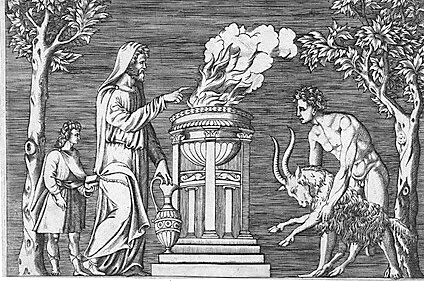
Rituals fall into a wide variety of categories. Theorist Ronald Grimes lists 16 of them:
- Rites of passage
- Marriage rites
- Funerary rites
- Festivals
- Pilgrimage
- Purification
- Civil ceremonies
- Rituals of exchange (as in worshipers making sacrifices to the gods in hope of receiving blessings from the divine)
- Worship
- Magic
- Healing rites
- Interaction rites
- Meditation rites
- Rites of inversion (rituals of reversal, where violating cultural norms is temporarily allowed, as in men dressing like women)
- Sacrifice
- Ritual drama
The important thing to understand about rituals is that they are not limited to very big, very formal events. Rituals can in fact be large or small, private or public, personal or social, religious or secular, uniting or dividing, conformist or rebellious. Funerals, weddings, presidential inaugurations, church services, baptisms, fraternal initiations, and tribal rites of passage are all rituals. Handshakes, dates, greetings and goodbyes, tattoos, table manners, your morning jog, and even singing the Happy Birthday song can be rituals as well.
Whither Ritual?
In many traditional societies, almost every aspect of life was ritualized. So why is there such a dearth of rituals in modern culture?
The embrace of ritual in the Western World was first weakened by two things: the Protestant Reformation’s movement against icons and ceremonialism and the Enlightenment’s emphasis on rationalism.

Historian Peter Burke, argues “the Reformation was, among other things, a great debate, unparalleled in scale and intensity, about the meaning of ritual, its functions and its proper forms.” Many Protestants concluded that the kind of rituals the Catholic Church practiced gave too much emphasis to empty, outward forms, rather than one’s internal state of grace. They rejected the “magical efficacy” of rites to be able to do things like change bread and wine into the literal body and blood of Christ.
The magical efficacy of ritual was attacked from the other side by Enlightenment thinkers. As discussed above, ritual is inherently nonrational since there is no practical relationship between the action and the end result. It is not rational to think that painting one’s body before battle will offer protection, that a rite of passage can turn a boy into a man, or that smoking a peace pipe can seal a treaty. Thus, ritual began to be associated with the superstitions of primitive peoples.
Suspicion of ritual again grew after World War II, in the wake of the way in which ritual ceremonies had been used to solidify loyalty to the Nazi cause.
Cultural embrace of ritual then really began to unravel during the social movements of the 1960s, which emphasized free expression, personal freedom, and individual emotional fulfillment above all. Rituals — which prescribe certain disciplined behaviors in certain situations, and require a person to forfeit some of their individuality in service to the synchrony and identity of the group — constrain spontaneity and the ability to do whatever one pleases. Ritual thus came to be seen as too constraining and not sufficiently “authentic.”
For these reasons, the use of and participation in rituals has been greatly curtailed. Or perhaps as historian Peter Burke argues, we’ve just replaced old rituals with new ones: “If most people in industrial societies no longer go to church regularly or practice elaborate rituals of initiation, this does not mean that ritual has declined. All that has happened is the new types of rituals—political, sporting, musical, medical, academic and so on—have taken the place of the traditional ones.” But the new rituals – watching sports, attending music festivals, checking Facebook, shopping, visiting a strip club on your 18th birthday — are light on nourishment and do not satisfy. Traditional rituals provided a mechanism by which humans could channel and process that which was difficult to grapple with – death, maturation, aggression – allowing the participant to discover new truths about themselves and the world. New rituals, if they can even really be called such, attempt to deny anything ugly in life (lest that lead you to close your wallet) and present a shiny, glossy façade — “confetti culture” – that facilitates passive consumption and turning away from examining given assumptions.
In our next post, we will argue that despite the cultural disdain for ritual, it is a human art form and practice which should be revived. It is true that ritual can be used for good or for ill, yet its benefit is so great that fear of the bad should not lead us to throw out the baby with the bathwater. Even if a man sees no place for ritual in his faith, he can have great use for it in other areas in his life (indeed, if his faith is completely unritualized, he has all the more need for other kinds of rituals). We will argue that even the most rational man might make room in his life for some “magic,” and that while ritual may seem constraining, it can paradoxically be incredibly empowering and even liberating. How that might be so, is where we will turn next time.
____________
Sources:
Ritual: Perspectives and Dimensions by Catherine Bell
Liberating Rites: Understanding the Transformative Power of Ritual by Tom F. Driver
00:05 Publié dans anthropologie, Définitions, Traditions | Lien permanent | Commentaires (0) | Tags : traditions, tradition, rituels, anthropologie, virilisme, machisme, masculinisme |  |
|  del.icio.us |
del.icio.us |  |
|  Digg |
Digg | ![]() Facebook
Facebook
Le Mazdéisme et l’Avesta : à l’origine des tribus indo-européennes
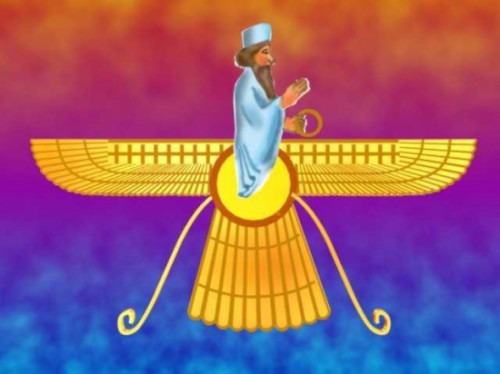
Le Mazdéisme et l’Avesta : à l’origine des tribus indo-européennes
« On vit apparaître
un si grand nombre d’analogies,
de points identiques entre les dogmes, les mythes,
les légendes, les institutions religieuses
de l’Orient et de l’Occident,
que les recherches prirent aussitôt
une direction nouvelle et précise »
(propos sélectionnés par Fabrice Dutilleul de la préface d’Émile Burnouf)
Qu’est-ce que l’Avesta ?
C’est l’ensemble des textes sacrés de la religion mazdéenne et forme le livre sacré, le code sacerdotal des zoroastriens. Il est parfois connu en Occident sous l’appellation erronée de Zend Avesta. Il est rédigé en plusieurs états de l’iranien ancien, désignés sous le nom d’avestique. Les parties les plus anciennes, celles des gathas, sont dans une langue aussi archaïque que celle du Rig Veda (sanskrit védique), le « gathique », les autres en avestique tardif. Le tout est écrit dans l’alphabet avestique.
Et qu’est-ce que le Mazdéisme ?
Le Mazdéisme originel remonte aux tribus indo-européennes des 2e et 1er millénaires avant JC. Il possède une étroite parenté avec l’ancienne religion indienne décrite dans les Veda. Le dieu suprême, Ahura Mazda ou Ormazd (Varuna, en Inde), est entouré de divinités, les Amesa Spenta. Cette religion est donc polythéiste. La société des hommes, quant à elle, est tripartite… Prêtres, guerriers et agriculteurs-éleveurs.
Que permet la persévérance de l’étude des religions ?
Que la science cherche depuis un siècle à en saisir l’unité. L’unité cherchée n’est pas cette fusion des églises qu’ont vainement discutée Leibniz et Bossuet ; c’est la communauté des dogmes primitifs d’où les diverses religions sont sorties ; c’est une unité historique.
Comment la science a-t-elle été conduite à cette recherche ?
Ce ne fut point par une théorie préconçue, par une rêverie ; ce fut par les faits eux‑mêmes. Tant qu’on n’eut pour matériaux que les doctrines chrétiennes, soit romaines, soit orthodoxes et, d’autre part, les anciennes mythologies grecques et latines, l’opposition entre elles parut si grande qu’on ne put pas les supposer issues d’un fonds commun. Mais lorsque, dans la seconde moitié du XVIIIe siècle et dans la première moitié du XIXe, on fut en possession des livres sacrés de l’Inde et de la Perse et qu’on put converser avec des Brahmanes et des Parsis, une révolution se fit dans la science. On vit apparaître un si grand nombre d’analogies, de points identiques entre les dogmes, les mythes, les légendes, les institutions religieuses de l’Orient et de l’Occident, que les recherches prirent aussitôt une direction nouvelle et précise.
Plusieurs conceptions primordiales ont donné lieu à plusieurs groupes de religions
Le groupe aryen parut le plus important et, après lui, le groupe sémitique. Le premier comprenait l’Inde, la Perse avec la Médie, les anciens Pélasges avec les Grecs et les Latins, les Germains, les Celtes, les Scandinaves. Le second était représenté par les peuples de race sémitique, notamment par les Assyriens, les Hébreux et plus tard par les Arabes. On voit que cette division des dogmes répond presque exactement à celle des langues. Si dans l’avenir, les langues sont, par de nouvelles découvertes, ramenées à une origine commune, il pourra en être de même des religions. Jusqu’à présent, disons‑le, rien ne fait prévoir un tel résultat. Constater des similitudes et une communauté d’origine entre plusieurs religions, ce n’est pas supprimer les différences. La science, prudente et sincère, ne supprime rien ; mais elle doit rendre raison de tous les faits constatés.
Le Mazdéisme. L’Avesta, Gaston-Eugène de Lafont, préface d’Émile Burnouf, éditions de L’Æncre, collection « Patrimoine des religions », dirigée par Philippe Randa, 238 pages, 26 euros
BON DE COMMANDE
Je souhaite commander :
...ex de Le Mazdéisme. L’Avesta (26 euros)
Autres livres de la collection
« Patrimoine des Religions » :
… ex de Le Mazdéisme. L’Avesta de Gaston-Eugène de Lafont (26 euros)
à renvoyer à : Francephi diffusion - Boite 37 - 16 bis rue d’Odessa - 75014 Paris - Tél. 09 52 95 13 34 - Fax. 09 57 95 13 34 – Mél. diffusion@francephi.com
Commande par internet (paiement 100 % sécurisé par paypal ou carte bancaire) sur notre site www.francephi.com
00:01 Publié dans Traditions | Lien permanent | Commentaires (0) | Tags : avesta, mazdéisme, traditions, traditionalisme, indo-européens |  |
|  del.icio.us |
del.icio.us |  |
|  Digg |
Digg | ![]() Facebook
Facebook
lundi, 16 décembre 2013
Défendre les fêtes et les traditions européennes...
Défendre les fêtes et les traditions européennes...
Voici le discours prononcé par Hughes Bouchu, responsable de la Ligue Francilienne, à Paris le 8 décembre :
Chers Amis,
Nietzsche disait de la fête qu’elle était « Le paganisme par excellence ». C’est dire si la préservation des fêtes traditionnelles de notre civilisation héléno-chrétienne est consubstantielle de notre identité. Aujourd’hui, une religion ostentatoire, totalitaire et conquérante, entend étouffer nos valeurs sous les sables d’un désert prêt à nous submerger.
Mes chers Amis, soyez en sûr, le combat de demain, sera gagné au nom de nos valeurs, de notre héritage civilisationnel, « par des veilleurs, disait Dominique Venner, postés aux frontières du royaume et du temps » et je rajouterai, des veilleurs arc boutés au Parthénon et à Notre Dame de Paris !
Lorsqu’on s’attaque en vérité à nos fêtes, ce n’est pas parce qu’elles sont chrétiennes, mais parce qu’elles sont de notre terre Europe, parce qu’elles remontent à notre histoire la plus lointaine, parce qu’elles sont nées du génie et de la volonté de nos ancêtres.
A Lutèce, qui est devenue Paris, notre sol sacré est irrigué du sang de nos pères. Là, Camulogène, le chef gaulois, a résisté aux soldats de César. Ici l’empereur fut applaudi par ses soldats et proclamé « impérator ». Les étudiants de toutes l’Europe médiévale venaient aux universités de Paris recevoir les enseignements des maîtres.
Ne nous y trompons pas. Lorsque certains réclament que nos fêtes soient mises sur le même plan que d’autres fêtes religieuses, ce n’est pas à une plus grande tolérance qu’on nous appelle, mais à renoncer à ce que nous sommes, à déshonorer notre patrie, à céder chez nous à la tyrannie de l’Autre, avec un grand A.
« Le triomphe des démagogues », disait Charles Péguy, « est passager, mais les ruines sont éternelles ». Alors qu’à Athènes, nous devrions construire une mosquée, à Istanbul on ne restitue pas Saint Sophie aux chrétiens.
La Turquie arrogante d’Erdogan veut nous imposer sa loi et nous devrions acclamer l’adhésion à l’Union Européenne de ce pays non-européen qui balance l’oeuvre de Kémal Atatürk aux orties, et qui prône un islamisme de Rabat à Ankara !
C’est aujourd’hui, une fois de plus, que nous devons montrer que nous ne renoncerons pas à ce que nous sommes. Et si cela déplait, et bien tant mieux ! Nous n’exigeons pas des autres qu’ils se plient à notre culture et à nos traditions. Ils ont le droit, tout comme nous, de défendre leurs coutumes, mais si l’Europe ne leur plait pas, telle qu’elle est, nous ne la changerons pas pour leurs faire une place qu’ils n’ambitionnent que par la trahison depuis plusieurs décennies de nos dirigeants corrompus. Comme savait nous le dire Georges Bernanos : « les démocraties ne peuvent plus se passer d’être hypocrites ! »
Oui, ils ont le droit de défendre leurs valeurs, leur culture, leurs fêtes et leurs rites, comme nous en avons le droit, mais chez eux, sur la terre de leurs ancêtres.
C’est pourquoi, en manifestant en ce jour, nous signifions clairement à tous ceux qui veulent nous néantiser, notre liberté de nous opposer à ce que l’on veut injustement nous imposer. Nous resterons maîtres chez nous, fidèles à la foi civilisationnelle de nos aïeux, respectueux du sens divin des fêtes et des rites, des sacrifices et des offrandes. Car, avant d’être chrétien ou d’être agnostique, avant d’être nationaliste, patriote ou d’être européiste, ce qui compte c’est d’être français et européen, d’être gaulois et romain, d’être un homme ou d’être une femme.
C’est notre identité dans sa complexité qui nous réunit pour combattre ceux qui nous nient.
Il y a quelques jours, défilaient ceux qui, au nom d’un anti-racisme fantasmé, veulent nous interdire de dire ce que nous pensons d’une greffe de peuplement qu’on nous impose et que nous rejetons. Ils veulent nous interdire de dénoncer l’usurpation d’une religion étrangère sur notre sol, sous prétexte que « des gens » pourraient être heurtés par l’affirmation identitaire des natifs, des indigènes, sur leur propre terre. Par contre, « eux » auraient le droit de s’affirmer en tant que tel ou que sais-je encore, mais pas nous.
Nous devrions payer le prix d’une substitution de population que nous n’avons pas souhaitée, d’un esclavage qui n’a enrichi qu’une extrême minorité de fumistes et de glandeurs, les mêmes qui s’enrichiront ensuite sur le dos des travailleurs français et européens dans les bureaux, dans les mines et dans les usines.
Eh bien, non ! Nous refuserons toute capitulation qui ne serait qu’une attitude par laquelle on se met à expliquer au lieu d’agir.
Chers camarades, en cette période d’avant Noël qui est la fête la plus enracinée de notre civilisation, je vous en conjure : défendons bec et ongles nos traditions, toutes nos traditions… Traditions gauloises, traditions celtiques, traditions médiévales, traditions antiques et traditions chrétiennes…
Et pour paraphraser Péguy, je dirais : « Notre droit ne fait pas la paix, il fait la guerre ! ».
00:05 Publié dans Traditions | Lien permanent | Commentaires (0) | Tags : fêtes, fêtes européennes, traditions |  |
|  del.icio.us |
del.icio.us |  |
|  Digg |
Digg | ![]() Facebook
Facebook
dimanche, 17 novembre 2013
L'uomo che cavalcava la tigre
L'uomo che cavalcava la tigre. Il viaggio esoterico del barone Julius
di Andrea Scarabelli
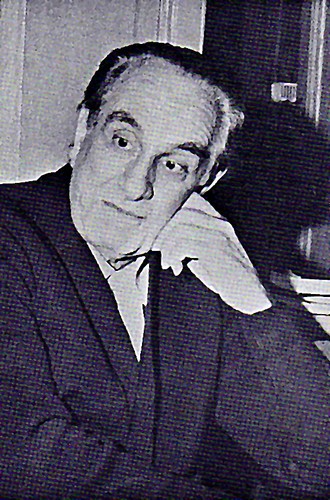 Quello che presentiamo è un autentico viaggio, realizzato attraverso le opere pittoriche evoliane, che ripercorre le tappe fondamentali della vita di quello che è uno dei protagonisti della cultura novecentesca. Un viaggio nel quale Evola non è una semplice comparsa ma autentico medium delle sue opere, trascinando il lettore all'interno del suo mondo, biografico ma soprattutto metabiografico.
Quello che presentiamo è un autentico viaggio, realizzato attraverso le opere pittoriche evoliane, che ripercorre le tappe fondamentali della vita di quello che è uno dei protagonisti della cultura novecentesca. Un viaggio nel quale Evola non è una semplice comparsa ma autentico medium delle sue opere, trascinando il lettore all'interno del suo mondo, biografico ma soprattutto metabiografico.
Un passo per volta, però. Lo sfondo di queste pagine è il vernissage di un'ipotetica esposizione: “Ea, Jagla, Julius Evola (1898-1974), poeta, pittore, filosofo. Il barone magico. Attraverso questa Mostra, promossa dalla Fondazione Julius Evola, conosceremo l'Evola pittore futurista e dadaista. È questa la prima retrospettiva a lui dedicata nel XXI secolo” (p. 13). Henriet ci invita a questa esposizione immaginaria, all'interno della quale ogni dipinto prende vita, inaugura una dimensione metatemporale e ci conduce attraverso le sillabe alchemiche dell'universo pittorico evoliano. Senza però fermarsi alle tele, a futurismo e dadaismo ma estendendosi all'interezza della “tavolozza dai molti colori dell'Irrazionalismo evoliano” (p. 13), momento altresì fondamentale per accedere alla cultura continentale novecentesca. E chi conosce il pensiero di Evola sa bene che tipo di valenza conferire al termine “irrazionale”...
Ad accompagnare il lettore altri non è che Evola stesso, a volte sostituito dal suo doppio Ea (uno degli pseudonimi con cui questi firmava taluni dei suoi contributi su Ur e Krur, alla fine degli anni Venti). Ogni dipinto “esposto” in quella che può considerarsi una galleria anzitutto interiore ridesta nel filosofo ricordi, universi, dimensioni – realtà. In ognuno dei ventisei capitoli che costituiscono il volumetto – molti dei quali recano, non casualmente, i titoli di opere evoliane, come Five o' clock tea, Nel bosco e Truppe di rincalzo sotto la pioggia – il lettore percorre i labirinti di Evola, ognuno dei quali avente una via d'accesso differente ma tutti diretti verso il cuore della sua Weltanschauung.
In questa dimensione, a metà tra la realtà fisica ed una onirico-allucinatoria, personaggi reali interagiscono con figure fantastiche – questo l'intreccio, abilmente restituito dalle pagine di Henriet. Non è difficile così scorgere un Evola intento a leggere recensioni dei suoi dipinti sulle colonne di riviste intemporali, intrattenere conversazioni con personaggi fantastici, percorrere dimensioni ontologiche ultraterrene. Ma, al contempo, a questi itinerari sono accostati momenti storici ben precisi, con il loro corollario umano - appaiono allora Arturo Reghini, Sibilla Aleramo, Arturo Onofri, Giulio Parise e gli iniziati del Gruppo di Ur.
Ed ecco evocati, come d'incanto, gli anni Venti, delle avanguardie e dei cenacoli esoterici. Ecco le feste organizzate dagli aristocratici, frequentate dal giovane Evola, nella fattispecie una, tenutasi per festeggiare la fine della Prima Guerra Mondiale: “Julius è vestito di nero, ed ha il volto coperto da una maschera aurea, provvista di un lungo naso conico” (p. 16). È l'unico, in Italia, tra i futuristi, ad apprezzare l'arte astratta. Il futurismo non è che una maschera, gli rivela la duchessa de Andri, organizzatrice della festa, liberatevene. E, tra le boutade di Marinetti e gli abiti disegnati da Depero, “egli andò oltre” (p. 22).
Non è che l'inizio: la realtà onirica diviene visione “vera” e simboli percorrono le trame dei vari capitoli, rendendoli interdipendenti tra loro: l'ape austriaca che, muovendosi a scatti con un ritmo metallico, si posa sulla tela appena conclusa di Truppe di rincalzo sotto la pioggia è la stessa che accompagna il giovane poeta Arturo Onofri tra i colpi delle granate della Grande Guerra, nella quale “la voce di Evola è a favore degli Imperi Centrali: l'Austria e la Germania” (p. 26).
Attraversati gli scandalismi e i manifesti futuristi, percorso il nichilismo dadaistico, il cammino del cinabro evoliano procede: “In un dorato pomeriggio autunnale, in Roma, nel 1921, alle ore 17, infine Evola capì. Aveva da poco smesso di dipingere. Quell'esperienza artistica era giunta alla fine, nel senso che le sue potenzialità creative si erano esaurite: tutto quel che poteva fare attraverso i quadri per procedere nella sua ricerca interiore, ebbene, lo aveva fatto” (p. 28). Alle 17.15, Evola si libera del suo doppio dadaista per procedere oltre, dopo l'abisso delle avanguardie per poi risalire, senza incappare nell'impasse dell'inconscio freudiano surrealista e della scrittura automatica. Via, verso Ur e Krur, La Torre e la sua rivolta contro la tirannia della modernità.
Come già detto, il percorso tracciato da Henriet non si arresta all'esaurimento della fase artistica, ma procede, percorrendo tutte le sue fasi fondamentali. Un altro frammento di realtà, trasfigurato e sublimato nelle serpentine dell'ermetismo pittorico del futuro filosofo: il XXI aprile 1927, dies natalis Romae, coglie il Nostro affacciato alla finestra di una torre – non d'avorio ma “di nera ossidiana” – mentre assiste da lontano ad una parata. “Tutta l'Urbe è in festa, ma Ea preferisce restarsene da solo, nel proprio salone. Per lui, in fondo, il fascismo è troppo plebeo” (p. 41). Ed ecco comparire, a cavallo di farfalle che sorvolano la Città Eterna, gli altri membri del Gruppo di Ur, quasi a formare una delle loro catene nei cieli liberi sopra la città, sopra il mondo intero, al di sopra della storia. Henriet rievoca qui le vicende legate alla celebre Grande Orma (episodio con retroscena ancora da scoprire, come testimonia il recente ottimo libro di Fabrizio Giorgio, Roma Renovata Resurgat, Settimo Sigillo, Roma 2012): “Nel 1923 hanno donato al capo del Governo un fascio formato da un'ascia di bronzo che proviene da una misteriosa e antica tomba etrusca, e dodici verghe di betulla, legate con strisce di cuoio rosso” (p. 42). La Tradizione porge la mano alla Storia, aspettando una risposta. Sono anni cruciali, questi, nei quali in poche ore possono decidersi non solo i destini di un decennio ma le sorti di un'intera civiltà. Riuscirà il fascismo a farsi depositario del proprio destino romano? Sono in molti a chiederselo. Attonito, Evola assiste al Concordato, al vanificarsi di un sogno, “ancora una volta è solo”, “uno spirito libero e aristocratico, fuori tempo e fuori luogo” (p. 42): in una parola, inattuale, in senso nietzschiano. Così, mentre le piazze gorgogliano dei singhiozzi gioiosi di quegli stessi che all'indomani del fallimento del fascismo prepareranno le forche e accenderanno i roghi, Evola se ne rimane in disparte. Alla fine della scena, una camicia nera emerge dal buio della notte, gli si avvicina, pronunciando, con una voce d'acciaio, queste parole: Il Natale romano è finito, barone. Da ora in poi, il destino degli eventi a venire è già scritto.
Ed ecco la Seconda Guerra Mondiale, la guerra civile europea, l'inizio di un nuovo ciclo, sul quale già pesa il presagio dell'ipoteca. Il viaggio nella prima mostra evoliana del XXI secolo continua, tra anticipazioni e retrospettive. Nella camera magica, Evola vede quello che sarà il suo destino: “In piedi, tra le rovine fumanti d'Europa, al termine della Seconda Guerra Mondiale, si aggira per Vienna. 1945. Una visione di morte. La tigre diventa metallo: la carne si solidifica” (p. 47). Sbalzato contro un muro dallo spostamento d'aria causato da una bomba, trascorrerà il resto della sua esistenza affetto da una semiparalisi degli arti inferiori.
Il Barone è costretto su una carrozzella, novella tigre d'acciaio. Il secondo dopoguerra. Con una certa ironia (che non sarebbe dispiaciuta al Barone ma che forse non piacerà a certi “evolomani”, come scrive Gianfranco de Turris nella sua Introduzione) l'autore immagina che proprio a cavallo di questa nuova tigre il Nostro continui la sua battaglia. Inizia a dipingere copie dei suoi dipinti degli anni Venti, dispersi (ossia venduti) durante la celebre retrospettiva del 1963. Eppure, anche in questa nuova situazione, si profilano nuovi attacchi, nuove situazioni da superare, come i Rivoluzionari del Sesso (evidente richiamo alle dottrine di Wilhelm Reich). Ed ecco gli Anti-Veglianti, Signori dell'Occhio, che tentano di impiantare un Occhio televisivo al posto di quelli biologici, teso ad uniformare Evola al mondo moderno, alla tirannia dell'homo oeconomicus e dei Mezzi di Comunicazione di Massa, che al terzo occhio ne sostituiscono uno artefatto e anestetizzante, che riduce l'uomo a Uomo Banale e Mediocre. Ma Evola riesce a fuggire.
Ennesima anticipazione: questa volta in alta montagna, molti passi sul mare, ancora di più sull'uomo, come aveva scritto Nietzsche. Eccolo assistere in anteprima alla deposizione delle sue ceneri sul ghiacciaio del Lys. Allucinato da uno dei suoi quadri, Evola ha una visione di quel che sarà: “Il vento spira freddo, la luce del sole è netta, brillante. Il silenzio domina tutto. I ghiacci eterni scintillano. V'è una gran quiete, tesa, nervosamente carica di energia in potenza” (p. 36). Per disposizione testamentaria, il suo corpo viene cremato, le ceneri disperse sulle Alpi. Così vive la propria morte Ea, Jagla, il Barone – nel libro non la conoscerà mai più, fisicamente. Si addormenterà, sognando un'intervista realizzata per la televisione svizzera nei primi anni Ottanta. Il “diamante pazzo” che scaglia bagliori qua e là, illuminando ora l'uno ora l'altro frammento del firmamento occidentale, è seduto “sulla sua tigre a dondolo, in legno aromatico e dai colori smaltati in vernice brillante” (p. 67). Certo, pensa Evola beffardamente, parlare di certe cose nel mondo moderno, servendosi dei media (chissà che avrebbe pensato oggi, nell'epoca della Rete...), non è certo ottimale. Comincia a dubitare della sua decisione di concedere l'intervista. Questa posizione a cavallo della tigre comincia ad apparirgli un po' scomoda. Risponde alle domande, ribadendo le proprie posizioni di fronte al neospiritualismo, alle censure di certe cricche intellettuali e via dicendo. Ma la realtà del suo sogno inizia a sfaldarsi. Il suo pellegrinaggio nel kali-yuga lo ha prosciugato: “Evola non immaginava che sarebbe stato così difficile. Il sogno della realtà è diventato un caos indistinto di colori acidi” (p. 71). Abbandonandosi al disfacimento dell'architettura onirica nella quale si vive morente, si spegne, “gli occhi accecati da una radianza aurea intensissima” (Ibid.). Il confine tra sogno e realtà è disciolto per sempre: Evola, che aveva visto la propria fine vivente in uno dei suoi quadri, ora vive la propria morte in un sogno.
Scritto con un registro stilistico iperbolico ed evocativo, il libro di Henriet, come messo a fuoco da de Turris nella già citata introduzione, non è però solo una rassegna di queste esperienze, quanto piuttosto una ricognizione sul senso dell'interezza del sentiero del cinabro, portato a stadio mercuriale durante il corso della vita del Nostro. Come è noto, a partire peraltro dalla sua biografia spirituale, il Cammino del cinabro, Evola diede pochissimo spazio a dettagli di ordine personale, preferendo ad essi un'impersonalità attiva fatta di testimonianze ed opere. In uno degli ultimi capitoli, Henriet scrive: “Della vita privata di Ea si sapeva poco, era come se non gli fosse accaduto nulla di personale. Egli era semplicemente il mezzo, uno dei possibili, attraverso i quali l'Io originario – la Genitrice dell'Universo, una delle Madri di Goethe – operava su quel piano della realtà, governato dalle regole del tempo e dello spazio” (p. 62). In questo può risolversi l'esercizio della prassi tradizionale, per come interpretata dal filosofo romano. Una azione nella quale l'essere un mezzo di istanze sovraindididuali non annichilisce l'Io, come vorrebbero invece talune spiritualità fideistiche sempre avversate da Evola, ma lo potenzia, finanche a realizzarlo in tutti i suoi molteplici stati. Un monito, questo, quanto mai attuale, tanto per accedere all'universo evoliano quanto per attraversare illesi il mondo moderno, sopravvivendo alle sue chimere e fascinazioni.
Alberto Henriet, L'uomo che cavalcava la tigre. Il viaggio esoterico del barone Julius. Presentazione di Gianfranco de Turris, Gruppo Editoriale Tabula Fati, Chieti 2012, pp. 80, Euro 8,00.
titolo: L'uomo che cavalcava la tigre. Il viaggio esoterico del barone Julius
autore/curatore: Andrea Scarabelli
fonte: Fondazione Julius Evola
tratto da: http://www.fondazionejuliusevola.it/Documenti/recensioneScarabelli_Sito.doc
lingua: italiano
data di pubblicazione su juliusevola.it: 10/06/2013
00:05 Publié dans Livre, Livre, Traditions | Lien permanent | Commentaires (0) | Tags : julius evola, evola, traditionalisme, tradition, italie, livre, philosophie |  |
|  del.icio.us |
del.icio.us |  |
|  Digg |
Digg | ![]() Facebook
Facebook
dimanche, 10 novembre 2013
LE JAPON MEDIEVAL : LE MONDE A L'ENVERS...
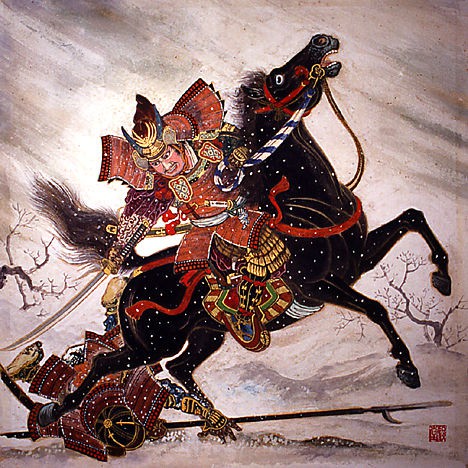
Rémy Valat
Le Japon médiéval est méconnu en France et grande est la tentation de le comparer à la période féodale européenne, tant il est vrai que nombreuses similitudes peuvent être constatées entre ces deux modèles de sociétés pourtant situées aux deux extrémités du continent eurasiatique.
Ce rapprochement, plutôt cette interprétation, est notamment le produit de l'historiographie nippone : le terme de « Moyen-Âge » apparaît pour la première fois sous la plume de l'historien Hara Katsurô, auteur d'une Histoire du Moyen-Âge parue en 1906. Pour lui, cette période instable et transitoire se situe entre deux sociétés stabilisées : Heian (794-1185) et Edo (1603-1867). Ce néologisme s'imposa sur l'appellation originelle des contemporains (l'« âge des guerriers »). Il est vrai que l'émiettement de l'autorité, la captation du pouvoir politique par les hommes d'armes, l'apparition de liens de vassalité, la naissance de seigneuries foncières, le phénomène monastique, l'émergence d'oppositions pour les libertés communales, l'essor économique et démographique, le développement d'une bourgeoisie urbaine favorisent le rapprochement (en dépit d'un décalage chronologique dans le développement de ce type de société au Japon).



À l'heure de la montée en puissance du nationalisme et d'une politique coloniale dynamique, le livre Hara Katsurô écrit dans le contexte de la victorieuse guerre russo-japonaise souhaite interpréter le « Moyen-Âge » comme une période fondatrice, d'affirmation de l'identité nationale, similaire à la période féodale européenne et où auraient dominé les valeurs martiales : ce discours visait à démontrer une « supériorité intrinsèque » des industries et des armées japonaises et à légitimer l'expansion coloniale en Asie. Une idée similaire sous-tend le livre de Nitobe Inazo, Le Bushidô : l'âme du Japon, ouvrage paru en 1910 et très prisé des artistes martiaux ou amoureux de la chose militaire qui tombent dans le piège tendu par l'auteur...
Le travail de Pierre-François Souyri a été de « remettre à l'endroit » l'histoire médiévale nippone et de corriger cette interprétation... L'histoire du Japon médiéval : le monde à l'envers, paru cette année au éditions Perrin-Tempus , paru en août 2013, est une réédition de l'ouvrage Monde à l'envers, la dynamique de la société médiévale, publié par la très regrettée maison d'éditions Maisonneuve et Larose en 1998. Le contenu de ce livre offre une forte similitude avec la 3ème partie (consacrée au Moyen-Âge) du même auteur de L'histoire du Japon des origines à nos jours, paru chez Hermann en 2009 avec cependant un intéressant chapitre additionnel comparant les sociétés médiévales européennes et nippones (chapitre 13. De la comparaison entre les sociétés médiévales d'Occident et du Japon). L'auteur, Pierre-François Souyri, professeur à l'université de Genève et ancien directeur la Maison Franco-japonaise de Tôkyô, est un spécialiste incontesté du sujet : on lui doit notamment la traduction du livre de Katsumata Shizuo relatif aux coalitions et ligues de la période médiévale (Ikki. Coalitions, ligues et révoltes dans le Japon d'autrefois, CNRS éditions, 2011). Enfin, le livre se fonde sur une abondante documentation et sources primaires japonaises, soigneusement confrontées et analysées.
L'« âge des guerriers » est une période foisonnante, aussi violente que créatrice. Après la victoire du clan des Minamoto sur celui des Taira (1185), un premier pouvoir militaire central s'impose : le shôgunat de Kamakura (1185-1333). Minamoto Yoritomo obtient de l'empereur le titre de sei tai shôgun (征夷大将軍 ), c'est-à-dire de « général en chef chargé de la pacification des barbares ». Mais, à la mort de ce dernier en 1199, le pouvoir réel échappe au fils du défunt (Minamoto Yoriie) ; le pouvoir est confié à un conseil de vassaux que domine le clan des Hôjô, clan dont l'influence ne cesse de s'étendre et de s'affirmer. Le shôgunat de Kamakura est resté dans toutes les mémoires en raison du célèbre épisode des tentatives d'invasions mongoles, dispersées par un typhon, un « vent divin » (1274 et 1281)... Ce long XIIIe siècle est propice à une intense réflexion spirituelle et à la contestation religieuse : des réformes sont initiées par les prédicateurs Hônen, Shinran, Nichiren et les maîtres zen, Eisai et Dôgen.
L'échec des invasions mongoles aussi est le prélude à la chute du clan Hôjô, incapable de récompenser les guerriers qui ont contribué aussi bien financièrement que par leur engagement personnel à la victoire. Une coalition de malcontents appuie l'empereur Go Daigo qui réalise une éphémère et autoritaire restauration impériale (restauration Kemmu, 1333-1336). L'empire se scinde ensuite en deux entités rivales (les cours du Nord et du Sud) ; la guerre civile fait rage, mais celle-ci profite au clan des Ashigaka, partisan de la cours kyôtoîte du Nord : en 1338, Ashikaga Takauji reprend la fonction de shôgun. Après la défaite de la « cour sudiste » en 1392 : les Ashikaga deviennent les maîtres du pays. La période Muromachi (1392-vers 1490) est entrecoupée de crises politiques et sociales sur fond d'essor économique (développement d'une économie commerciale avec échanges monétaires et premières tentatives d'accumulation de capital). C'est le « monde à l'envers » (gekokujô, 下剋上) : les mouvements civils ou religieux d'autonomie rurale et urbaine et l'irrésistible ascension de la classe des guerriers débouchent sur un affrontement général, dont l'enjeu devient l'unification du pays. Oda Nabunaga, Toyotomi Hideyoshi et Tokugawa Ieyasu la réaliseront au prix d'une longue guerre contre les forces politiques centrifuges, conflit dont Ieyasu sort vainqueur en créant la dernière dynastie de shôgun en 1603.
Le monde à l'envers c'est surtout celui des petites gens avides d'autonomie et d'ascension sociales dans un contexte de mutation économique et sociale, mais aussi celui d'un monde flottant qui a influencé les modes de vie et la culture nippones (les parias, appelés notamment kawaramono, 河原者). Les guerriers, acteurs principaux de la période médiévale et en particulier ceux de l'est de l'île d'Honshû, s'organisent sur une base familiale et clanique et créent des liens de vassalité (bushidan, 武士団). Ils sont issus de lignées de déclassés de la cour (voire de princes de la famille impériale, c'est le cas du lignage des Taira et des Minamoto qui font s'affronter entre 1180 et 1185) venu tenter leur chance loin de la capitale ou bien proviennent du milieu des paysans aisés et de la petite notabilité rurale. Ces hommes sont très attachés à leur terroir et défendent les intérêts des travailleurs de la terre, desquels ils se désolidarisent progressivement pour les dominer. Ces militaires en quête d'ascension sociale et de récompenses sont loin de la représentation conventionnelle du serviteur fidèle et loyal façonnée à l'époque d'Edo. Leur engagement est conditionné par les revenus de leurs terres : la période des récoltes (et de la perception des redevances) venue, le souffle d'un vent politique ou militaire contraire, ces hommes s'évaporent ou changent de camp. Leurs prouesses militaires, relatées dans les « dits » servent autant à bâtir une réputation qu'à ouvrir droit à récompenses... Si la bravoure du guerrier japonais médiéval ne peut être remis en question, leur éthique et leurs motivations étaient cependant plus prosaïques...
Histoire du Japon médiéval, le monde à l'envers, de Pierre-François Souyri, aux éditions Perrin-Tempus, août 2013, 522 p.
00:09 Publié dans Traditions | Lien permanent | Commentaires (0) | Tags : traditioon, traditions, traditionalisme, japon, asie, samourai |  |
|  del.icio.us |
del.icio.us |  |
|  Digg |
Digg | ![]() Facebook
Facebook
mercredi, 06 novembre 2013
Un texte du 19ème siècle sur la formation du Samouraï déchiffré
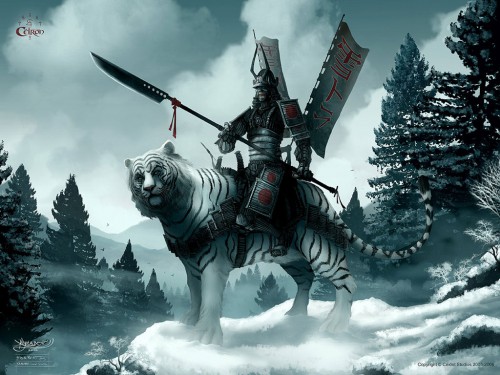
Un texte du 19ème siècle sur la formation du Samouraï déchiffré
Ex: http://www.zejournal.mobi
Un texte d'entraînement, utilisé par une école d'arts martiaux pour enseigner aux membres de la classe bushi (samurai ou samouraï), a été déchiffré. Il révèle les règles que les samouraïs étaient censés suivre et ce qu'il fallait faire pour devenir un véritable maître épéiste.
Le texte est appelé Bugei no jo, ce qui signifie "Introduction aux arts martiaux" et est daté de la 15e année de Tenpo (1844).
Écrit pour les étudiants samouraïs sur le point d'apprendre le Takenouchi-Ryu, un système d'arts martiaux , il devait les préparer pour les défis qui les attendaient.
Une partie du texte traduit donne ceci: "Ces techniques de l'épée, nées à l'âge des dieux, ont été prononcées par la transmission divine. Elles forment une tradition vénérée de par le monde, mais sa magnificence se manifeste seulement quand on a pris connaissance (...). Quand [la connaissance] est arrivée à maturité, l'esprit oublie la main, la main oublie l'épée," un niveau de compétence que peu obtiennent et qui requiert un esprit calme.
Le texte comprend des citations écrites par les anciens maîtres militaires chinois et est écrit dans un style Kanbun formel: un système qui combine des éléments de l'écriture japonaise et chinoise.
Le texte a été publié à l'origine par des chercheurs en 1982, dans sa langue originale, dans un volume de l'ouvrage "Nihon Budo Taikei." Récemment, il a été partiellement traduit en anglais et analysé par Balázs Szabó, du département d'études japonaises de l'Université Eötvös Loránd à Budapest, en Hongrie.
La traduction et l'analyse sont décrites dans la dernière édition de la revue Acta Orientalia Academiae Scientiarum Hungaricae.
Parmi ses nombreux enseignements, le texte dit aux élèves de montrer une grande discipline et de ne pas craindre le nombre d'ennemis. "(...) c'est comme franchir la porte d'où nous voyons l'ennemi, même nombreux, nous les voyons comme quelques uns, donc aucune crainte ne s'éveille, et nous triomphons alors que le combat vient à peine de commencer", citation d'un enseignement Sur les Sept Classiques Militaires de la Chine ancienne.
Le dernier siècle des samouraïs
En 1844, seuls les membres de la classe Samouraï étaient autorisés à recevoir une formation d'arts martiaux. Szabó explique que cette classe était strictement héréditaire et qu'il y avait peu de possibilités pour les non-samurai d'y adhérer.
Les étudiants Samurai, dans la plupart des cas, auraient participé à plusieurs écoles d'arts martiaux et, en outre, auraient appris "l'écriture chinoise, les classiques confucéens et la poésie dans les écoles du domaine ou des écoles privées", a expliqué Szabó.
Les étudiants qui commencent leur formation de Takenouchi-ryu en 1844 ne réalisaient pas qu'ils vivaient à une époque où le Japon était sur ??le point de subir d'énormes changements.
Pendant deux siècles, il y a eu des restrictions sévères sur les Occidentaux entrant au Japon. Cela a pris fin en 1853 quand le commodore américain Matthew Perry est entré dans la baie de Tokyo avec une flotte et a exigé que le Japon signe un traité avec les États-Unis.
Dans les deux décennies qui ont suivi, une série d'événements et de guerres ont éclaté qui on vu la chute du Japon Shogun, la montée d'un nouveau Japon moderne et, finalement, la fin de la classe des Samouraïs.
Les règles Samurai.
Le texte qui vient d'être traduit énonce 12 règles que les membres de l'école de Takenouchi-ryu étaient censés suivre.
Certaines d'entre elles, dont "Ne quittez pas le chemin de l'honneur !" et "Ne commettez pas de turpitude !" étaient des règles éthiques que les samouraïs étaient censés suivre.
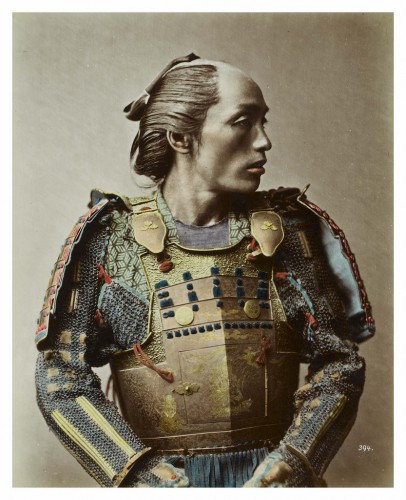
Une règle notable, "Ne laissez pas les enseignements de l'école s'échapper !" a été créé pour protéger les techniques secrètes d'arts martiaux de l'école et à aider les élèves s'ils devaient se trouver au milieu d'un combat.
"Pour une école d'arts martiaux ... afin d'être attrayante, il était nécessaire de disposer de techniques spéciales permettant au combattant d'être efficace même contre un adversaire beaucoup plus fort. Ces techniques sophistiquées faisaient la fierté de l'école et étaient gardées secrètes, car leur fuite aurait causé une perte aussi bien économique que de prestige", écrit Szabó.
Deux autres règles, peut-être plus surprenantes, précisent que les étudiants "ne se concurrencent pas !" et "Ne racontent pas de mauvaises choses sur d'autres écoles !".
Les occidentaux modernes ont une vision populaire des samouraïs s'affrontant régulièrement, mais en 1844, ils n'étaient pas autorisés à se battre entre eux.
Le shogun Tokugawa Tsunayoshi (1646-1709) avait placé une interdiction sur les duels d'arts martiaux et a même réécrit le code que le samouraï devait suivre, en l'adaptant pour une période de paix relative. "L'apprentissage et la compétence militaire, la loyauté et la piété filiale, doit être promue, et les règles de la bienséance doivent être exécutées correctement", expliquait le shogun (traduction du livre "Études sur l'histoire intellectuelle du Japon des Tokugawa," par Masao Maruyama, Princeton University Press, 1974).
Les compétences secrètes.
Le texte propose seulement un faible aperçu des techniques secrètes que les élèves auraient appris à cette école, en séparant les descriptions en deux parties appelées "secrets les plus profonds du combat" et "secrets les plus profonds de l'escrime."
Une partie des techniques secrètes de combat à mains nues est appelé Shinsei no daiji, ce qui se traduit par "techniques divines", indiquant que ces techniques étaient considérées comme les plus puissantes.
Curieusement, une section de techniques secrètes d'escrime est répertoriée comme ?ry?ken, également connu sous le nom IJU ichinin, ce qui signifie "ceux considérés être accordés à une personne" - dans ce cas, l'héritier du directeur.
Le manque de détails décrivant ces techniques dans des cas pratiques n'est pas surprenant pour Szabó. Les directeurs avaient des raisons pour utiliser un langage crypté et l'art du secret.
Non seulement ils protégeaient le prestige de l'école, et les chances des élèves dans un combat, mais ils contribuaient à "maintenir une atmosphère mystique autour de l'école," quelque chose d'important pour un peuple qui tenait l'étude des arts martiaux en haute estime.
- Source : Les Découvertes Archéologique
00:05 Publié dans Traditions | Lien permanent | Commentaires (0) | Tags : tradition, traditions, traditionalisme, japon, samourai, asie, castes guerrières |  |
|  del.icio.us |
del.icio.us |  |
|  Digg |
Digg | ![]() Facebook
Facebook
mercredi, 30 octobre 2013
Il diritto negato alla tradizione
Dopo quello che abbiamo definito il falso mito del diritto alla cultura, forse suscitando l’orrore di qualcuno, ci occupiamo dell’autentico mito di un diritto negato, un diritto che può avere diversi nomi ma che qui definiremo, semplicemente, diritto alla tradizione.
Hic et nunc il termine tradizione viene assunto nella sua pura semplicità che lo rimanda, direttamente, al patrimonio simbolico e culturale trasmesso di generazione in generazione. L’Italia è un Paese di tradizioni interrotte, di culture locali che in forza di una serie di con-cause hanno cessato di essere trasmesse di Padre in Figlio, di Madre in Figlia. I tratti comuni di queste culture erano l’oralità e il dialetto (lingue sì, ma non codificate e dunque legate al vitalismo delle comunutà parlanti), e tutte manifestavano sia lo scopo di produrre la massima autonomia del singolo nella sfera produttiva, sia la qualità che, curiosamente ma nemmeno troppo, Alan W. Watts assegna al Taoismo, l’antico sistema metafisico, etico e infine religioso della Cina, nel suo celebre lavoro “Il Tao. La via dell’acqua che scorre”: “L’antica filosofia del Tao segue in modo abile ed intelligente il corso, la corrente e le venature dei fenomeni naturali, considerando la vita umana come un’integrale caratteristica del processo del mondo”. Diversa, quindi, dalla scienza occidentale che “ha posto l’accento sull’atteggiamento di oggettività – un freddo, calcolatore e distaccato atteggiamento per mezzo del quale appare che i fenomeni naturali, incluso l’organismo umano, non sono altro che meccanismi”.
Le tradizioni interrotte d’Italia erano culture in cui la sapienza si scambiava con la saggezza, in un gioco caleidoscopico di empirismo, produzione fiabesca, pragmatismo, originalità. Erano, anche, confini difficilmente superabili dal Potere, persino da quello religioso che doveva, sovente, scendere a patti con le tradizioni pre-esistenti e con le credenze ataviche delle comunità. Erano veri e propri anticorpi sociali alle pretese di “dominio” che le istituzioni del tempo coltivavano nei confronti dei propri sottoposti, emblemi di un’alterità che tracciava una demarcazione netta tra chi esercitava il potere e chi poteva ribellarvisi.
Perché e come queste tradizioni sono state interrotte e rescisse? Chi o cosa minacciavano concretamente?
La loro eliminazione era naturaliter funzionale all’affermazione dello Stato nazionale, di quella moderna unità linguistica e storica che si affermò – ancorché incompiutamente – attraverso la scuola, la guerra e, infine, attraverso la televisione, lo strumento di comunicazione, manipolazione e persuasione più potente che sia mai apparso sulla scena della storia.

Il 9 dicembre 1973, dalle colonne del Corriere della Sera, Pier Paolo Pasolini lanciava uno storico monito dal carattere profetico: “Nessun centralismo fascista è riuscito a fare ciò che ha fatto il centralismo della civiltà dei consumi. Il fascismo proponeva un modello, reazionario e monumentale, che però restava lettera morta. Le varie culture particolari (contadine, sottoproletarie, operaie) continuavano imperturbabili a uniformarsi ai loro antichi modelli: la repressione si limitava ad ottenere la loro adesione a parole. Oggi, al contrario, l’adesione ai modelli imposti dal Centro, è tale e incondizionata”. L’articolo prosegue: “Per mezzo della televisione, il Centro ha assimilato a sé l’intero paese che era così storicamente differenziato e ricco di culture originali. Ha cominciato un’opera di omologazione distruttrice di ogni autenticità e concretezza. Ha imposto cioè – come dicevo – i suoi modelli: che sono i modelli voluti dalla nuova industrializzazione, la quale non si accontenta più di un “uomo che consuma”, ma pretende che non siano concepibili altre ideologie che quella del consumo”.
La soppressione delle culture popolari era anche un atavico obiettivo di coloro che professavano l’affermazione definitiva di una nuova fede, quella nella scienza. Oggi sappiamo, o dovremmo sapere, che nessuna verità scientifica è inconfutabile, che nulla di quanto è scientifico può non essere superato. Ciononostante, attribuiamo alla scienza un valore dogmatico. Ciononostante, abbiamo elevato la scienza a nuova religione, con i suoi riti, i suoi sacerdoti e i suoi anatemi, pagando questo scotto con la perdita di bio-diversità culturale, la disumanizzazione del lavoro, l’iper-medicalizzazione, il costante tentativo di superamento dell’ultima etica possibile, l’etica della vita o bio-etica.
Attraverso il mito della sapere scientifico, passate le co-scienze per la “spada” della televisione , siamo giunti a una nuova ortodossia del pensiero che ci avvolge da ogni lato, offrendoci risposte ma risparmiandoci domande: un nuovo totalitarismo a cui le tradizioni locali avrebbero contrapposto un anarco-liberismo del pensiero, basato sulla trasmissione “selvatica” di ciò che agli invidui spetta loro non in virtù di un inconsistente diritto sociale alla redistribuzione del reddito ma di un diritto naturale alla trasmissione di simboli – mai davvero assimilati alla cultura ufficiale, nemmeno da quella religiosa – e al loro recepimento.
Il processo di nazionalizzazione e costruzione della nazione, giustificato da un presunto “riscatto” delle masse dall’ignoranza da cui sarebbero state afflitte, si manifesta oggi come un processo di giustificazione dello Stato e dei processi persuasivi di potere, manipolazione e controllo sulle coscienze. Quanto poco efficace sia questo processo nel creare uomini liberi, lo testimonia l’analfabetismo di ritorno a cui la maggior parte della popolazione, dopo essere stata privata della sua iniziazione al sapere locale, viene condannata. Ma siamo sicuri che si tratti davvero di analfabetismo di ritorno, o forse l’unico alfabetismo che interessa alle istituzioni scolastiche è quello di instillare, nelle anime giovani, niente più che “Miti”, mere credenze e principi prodotti sotto l’egida della certezza scientifica e certificati dal complesso militare-industriale?
Può una società massificata, in cui il sapere e la cultura delle masse non sono argini all’esercizio del potere ma sue dirette emanazioni, essere davvero una società di uomini liberi?
00:05 Publié dans Philosophie, Terroirs et racines, Traditions | Lien permanent | Commentaires (0) | Tags : tradition, pier paolo pasolini, pasolini, heimat, terroir, racines, italie |  |
|  del.icio.us |
del.icio.us |  |
|  Digg |
Digg | ![]() Facebook
Facebook
lundi, 28 octobre 2013
Remplacer les fêtes chrétiennes par Yom Kippour et l’Aïd

Remplacer les fêtes chrétiennes par Yom Kippour et l’Aïd : 80% des français disent non
Ex: http://zejournal.mobi
La France est un pays de culture et de tradition catholique, sous un régime républicain et démocratique. Je mérite sûrement la guillotine, bien affûtée, de la libre parole républicaine pour ces propos nauséabonds. Plus besoin de guillotine, elle est désormais implantée directement dans les âmes et consciences, et ce, dès l’enfance, grâce à la « ligne Buisson » de la laïcité de Vincent Peillon, et la pastorale républicaine qu’il met en place à l’école. Prochaine étape : la suppression des fêtes chrétiennes. On y vient très vite, on y est : une «sociologue» convertie à l’islam, membre de l’Observatoire de la laïcité, vient de proposer de remplacer deux fêtes chrétiennes par une fête juive et une fête musulmane…
L’Observatoire de la laïcité, organisme étatique dépendant directement du Premier Ministre de la République, a été créé en 2007, sûrement pour contrer, au moins en tant que « poudre aux yeux », la problématique du culte musulman au cœur du quotidien des citoyens. Aujourd’hui, au main des socialistes, cet observatoire devient très dangereux – comme pour nombre de lois prises sous la droite, que la droite applaudissait, et qu’elle se prend aujourd’hui en pleine poire. Dounia Bouzar, qui a été nommée dimanche à l’observatoire de la laïcité par le Premier ministre, qui est une anthropologue spécialiste du fait religieux, propose, dans un entretien à Challenges, de remplacer deux fêtes chrétiennes (au choix) par Yom Kippour et l’Aïd…
Cette experte, donc, nous informe que « la France a montré l’exemple de la laïcité au monde en instaurant la première la liberté de conscience » [sauf pour les pharmaciens ou les maires - ajout de l’ami Michel Janva]. Liberté de conscience, soit dit en passant, qui existait dès la grèce antique, sinon avant, et qui trouve d’ailleurs dans la théologie médiévale des arguments étayés. Il suffit d’ouvrir saint Thomas d’Aquin pour comprendre que l’homme créé à l’image de Dieu veut dire qu’il en est l’image en tant qu’il est libre, comme Lui, de ses actes et de ses pensées.
À la fin de cet entretien sur les cas posés par la problématique musulmane au travail et dans les cantines, le journaliste lui demande quand même s’il faut ajouter deux fêtes en plus ; et notre experte en laïcité de répondre : « le clergé y a longtemps été opposé mais il a évolué et n’y est plus hostile car il y a beaucoup de fêtes chrétiennes ». Il a « évolué ». Comprenez : le clergé sort enfin des siècles sombres, moyenâgeux et lugubres dans lesquels il était enfermé, et il en sort sous l’impulsion du « sens de l’histoire », qui file en droite ligne vers le Grand Soir socialiste, le paradis terrestre, enfin délivré de toute croyance et de toute vérité des cieux.
Et, comme toute histoire a ses prophètes, je vous en offre deux qui avait tout prévu : le prophète Jacques Attali disait déjà, en février 2003, qu’« il convient (…) d’enlever de notre société laïque les derniers restes de ses désignations d’origine religieuse. »… Pas mieux que l’autre prophète, Vincent Peillon, qui affirmait dans une vidéo de 2005 qu’il fallait détruire la religion catholique, pour imposer sa « religion laïque et républicaine » (l’équivalent, chez lui, de « socialiste »). L’enjeu, dit Peillon, est « de forger une religion qui soit non seulement, plus religieuse que le catholicisme dominant, mais qui ait davantage de force, de séduction, de persuasion et d’adhésion, que lui. ». La chose est claire ? Il parle exclusivement du catholicisme, et non des autres religions : la rivalité mimétique de la République et de l’Église, dès la Révolution française – qui n’est pas terminée, rappelons-le, est un combat, une guerre des religions qui est strictement polarisée par ces deux-là. L’islam est là de surcroit, comme un allié objectif de la République dans ce combat, quoi qu’on puisse en penser.
L’objectif est donc clairement de bâtir une société anti-chrétienne. Pourquoi autant de pessimisme et de fermeture, me direz-vous : l’espace social n’est-il pas le lieu de la « cohabitation des différences » et du « multiculturalisme » ? Oui, très bien, et alors il ne resterait qu’à nous, chrétiens, de convaincre les autres – sans pouvoir trop en parler publiquement, en se cachant dans les caves, en évitant d’être trop « visible », se faisant tout petit, et en n’intervenant surout pas dans les débats publics. Comment voulez qu’une lampe éclaire le monde si elle est placée sous la table ? Comment voulez-vous que l’avenir de la France se batisse sans son passé ? Comment voulez-vous construire une maison sans ses fondations ? Point n’est besoin de fondation, d’historicité et de continuité, puisque, dans leurs esprit peilloniens, tout commence par la Révolution, et tout finira avec la Révolution achevée : une Révolution, selon le grand-maître Peillon, qui est « un événement religieux », une « nouvelle genèse » un « nouveau commencement du monde », une « nouvelle espérance », une « incarnation théologico-politique », qu’il faut porter à son terme, à savoir : « la transformation socialiste et progressiste de la société toute entière » (La révolution française n’est pas terminée, p. 195).
« c’est encore une religion, sinon une certaine forme de religiosité, qui est encore à l’œuvre dans ce médiocre spectacle dit laïque »
Que les musulmans (et les juifs) ne se réjouissent donc pas trop vite : ils sont aujourd’hui les idiots utiles de la République, plus que les alliés objectifs. Une République qui se sert de l’islam, à sa droite, et du « multiculturalisme », à sa gauche, pour imposer sa propre religion, mais qui veut les fendre toutes, et, au premier chef, l’Église, dont elle est depuis le début la copie mondaine et le décalque horizontal. Elle veut et n’existe que pour s’imposer elle-même comme religiosité, et, grâce à Vincent Peillon, dont on peut reconnaître, au moins, la franchise, cela est rendu public. Oui il faudra répandre la bonne parole, selon le rapport de l’Observatoire de la laïcité remis le 25 juin au Premier ministre : « favoriser la diffusion de guides de la laïcité dans les municipalités, hopitaux, maternité, entreprises privées », « inventer une charte laïque » ou encore « enseigner la morale laïque à l’école » (p. 4), tout cela en s’appuyant « sur la lutte contre toutes les discriminations économiques, sociales, urbaines ». L’homme nouveau, républicain et socialiste, ouvert à tout sans n’être à rien, subissant toutes les cultures du monde sans avoir le droit à la sienne, étant partout « chez autrui » plutôt que « chez lui », sera lisse et livide, sans visage et sans porosité, homme relatif et relativiste, où tout se vaut, dans une angoisse permanente et suffoquante. Rien à quoi se rattacher. Sinon à la République laïque et socialiste qui est là, et qui tend les bras.
Oui, c’est encore une religion, sinon une certaine forme de religiosité, qui est encore à l’œuvre dans ce médiocre spectacle dit « laïque ». Les petits rituels narcissiques, ludiques ou névrotiques de l’homo festivus sont désormais les grandes-messes du monde post-moderne, avec leurs prêtres, leurs thuriféraires, leurs porte-croix, leurs fêtes de Bacchus, leurs processions infâmes et leurs vêpres télévisuelles débilisantes. Et les sermons servis au cours de ces messes profanes sont d’une violence inouïe pour toute personne attachée à la continuité, la verticalité, la transcendance et le sérieux de la vie en société. Chrétiens, vous n’êtes pas les bienvenues : vous représentez le passé, le mur, l’échaffaud sur lequel, certes – et encore ! – on a bâti la civilisation, mais qu’il faut désormais rejeter. Place aux autres, à tout le monde, sauf à vous, déchets moyenâgeux.
- Faites donc une « croix » sur deux fêtes (au choix, mais ne rêvez pas trop pour un réferundum) :
Lundi de Pâques (21 avril pour 2014)
Jeudi de l’Ascension (29 mai pour 2014)
Lundi de Pentecôte (9 juin pour 2014)
Assomption (15 août)
Toussaint (1er novembre)
Noël (25 décembre)
Puis tournez-vous vers le dieu républicain, ses valeurs « humanistes » et immanentes, cette « transcendance flottante », cette réduction anthropologique, gage de paix, de sérénité, et surtout, comme nous le voyons tous les jours dans notre société, de beau, de vrai et de bien. Amen.
- Source : Nouvelles de France
00:07 Publié dans Actualité, Traditions | Lien permanent | Commentaires (0) | Tags : fêtes chrétiennes, fêtes musulmanes, fêtes juives, yom kippour, aïd el kebir, traditions, actualité, fête du mouton |  |
|  del.icio.us |
del.icio.us |  |
|  Digg |
Digg | ![]() Facebook
Facebook
samedi, 26 octobre 2013
Niet Piet maar de Sint is het probleem
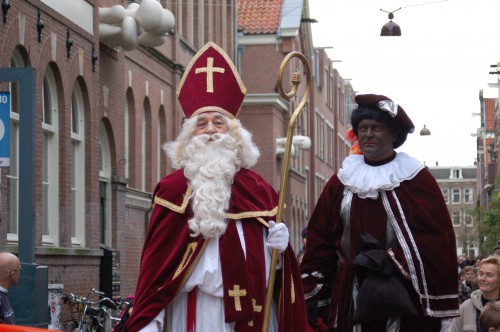
Ex: http://visionairbelgie.wordpress.com/2013/10/24/piet/
Niet Piet maar de Sint is het probleem
Shepherd
Nog maar net is het stofwolkje rond mijn kritiek op het moraalridderdom van de humanitaire gemeenschap gaan liggen, of daar komt mevrouw Verene Shepherd met een heuse VN-delegatie naar Nederland (dus niet naar België of waar dan ook, maar het vrijdenkende Holland) om te onderzoeken of die Zwarte Piet wel geen vermomde Surinaamse slaaf zou kunnen zijn.
Ik kan haar bij voorbaat gerust stellen: neen, Piet is geen Creool uit de omstreken van Paramaribo, de Hollanders zullen op een andere manier met hun koloniaal verleden moeten klaarkomen.
Wel stuitend is deze nieuwe opstoot van mondiale political correctness en mensenrechterlijke haarklieverij. Niet dus tegenover het Indische kastensysteem dat nog steeds zeer verbreid is. Niet tegen de vaginale verminking wereldwijd of de kinderarbeid of de slavernij van vandaag, of de onthoofding van homo’s in
Saudi-Arabië, of het heksengeloof dat in Afrika nog altijd vrouwen en kinderen letterlijk de woestijn in drijft. Maar dus wel tegen de 6 december-folklore waar trouwens geen enkel kind nog in gelooft, al doen ze alsof om hun ouders een goed gevoel te geven.
Afbleekmiddel
Om die Hollandse pietenhysterie te duiden, ondertussen goed voor anderhalf miljoen FaceOdinbooklikes, is het goed om even de herkomst van de traditie op te frissen. En het gaat wel degelijk over kleuren. De Christelijke Klaasfiguur is gebaseerd op de legendes rond de semi-fictieve Nicolaas van Myra, een bisschop die in de 4de eeuw zou geleefd hebben, en vooral gereputeerd was als helper-in-nood voor onbemiddelde meisjes die in de prostitutie dreigen verzeild te geraken (belangrijk voor het vervolg van ons verhaal).
De Zwarte Piet is een ander verhaal, of toch weer niet. De andere, heidense Nicolaas, die men omwille van de zieltjeswinnerij vermengde met de Christelijke versie, is namelijk een gedaante van de Germaanse oppergod Wotan, een nachtridder die met zijn achtpotige Sleipnir vooral in de twaalf donkerste dagen van het jaar de buurt onveilig maakte en in ruil voor bescherming loon-in-natura eiste. Geen gever dus, maar een nemer.
Probleem voor de Christelijke iconologie: na de nuttige vermenging van de twee klazen moest dat zwart-maffieus tintje er wel terug uit, teneinde weer een proper, deugdelijk afkooksel te bekomen dat zonder problemen in de Biblioteca Sanctorum paste.
En zo ontstond het olijke duo van de bebaarde Goedheilige Man alias de gecastreerde Wotan, en zijn donkerhuidige dommekracht, in Vlaanderen nog steeds Nicodemus genoemd. In de Angelsaksische wereld heeft men alleen Santa Claus overgehouden en de Piet zedigheidshalve gedumpt. Maar het lijdt geen twijfel: Pieterman is een afsplitsel van Sinterklaas zelf, en herinnert aan de fratsen van de seksbeluste Wotanfiguur. Mevrouw Shepherd wil dus eigenlijk de geamputeerde penis (de roe) van de weldoener op sterk water. Gevaarlijk werk voor meisjes, me dunkt.
Kinderlokker en meisjesgek
Zo zijn we direct waar we moeten wezen: niet de zwartheid van Piet is het probleem, mKlaasaar wel de witter-dan-witheid van Klaas, wiens schijnvroomheid veel stof tot contestatie biedt, zonder dat men er het racisme hoeft bij te sleuren. Er zijn m.a.w. een boel redenen om dat Klaasgedoe eens door de mangel te draaien, zomaar, zonder tussenkomst van de Verenigde Naties.
Vooreerst is het stuitend dat dit icoon van de Christelijke caritas altijd al een conservatieve functie heeft gehad: hij moest de rijken aanzetten tot vrijgevigheid, in hun eigen belang, opdat de armen niet opstandig zouden worden. In de 19de eeuw zou die meritocratische achtergrond absoluut primeren: wie rijk is, heeft dat ook verdiend, en wie arm is al evenzeer. De schoentjes van de deugdzamen worden het best gevuld, omdat ze hun mérites voor deze maatschappij bewezen hebben. De anderen moeten maar wat harder werken, eventueel aangespoord door de roe.
Vandaag stoort mij vooral de permanente ongelijkheid in het Sinterklaasverhaal, de afzichtelijke commercialisering van het ritueel, en het feit dat de vrijgevigheid van de Sint, als PR-man van de speelgoedindustrie, vooral met de draagkracht van de ouderlijke beurs is verbonden. Er zij dus kinderen die gewoon niks krijgen, nada, noppes, met de impliciete motivatie dat het met hun slecht gedrag te maken heeft. Ze zijn zwart, gebrandmerkt, veel meer dan de geschminkte Piet.
Terecht geven kinderen bij dit vertoon hun eigen onschuld maar wat graag op. Het zijn uiteindelijk zij die de Sint wandelen moeten sturen, als een verhaal vol ranzige kantjes.
In een bredere context is de link tussen braafheid en giften krijgen ronduit ranzig. Het creëert afhankelijkheid én onderdanigheid. Het maakt van de Sint een usurpator en kinderlokker, wat hij eigenlijk altijd al was. Zijn voorkeur voor jonge meisjes –liefst arm, die zijn gewilliger- is een rode draad in alle Sintlegendes, ook de Christelijke. Zijn Piet hangt er niet zo maar bij, maar is een wezenlijk onderdeel van een seksuele toeëigening die als dusdanig niet herkend wordt, juist door de tweeledigheid, de scheiding tussen wit en zwart.
Dat Pietencirkus dient dus vooral om de aandacht van de handen van de goedgeilige man zelf af te leiden. Men kan er nochtans moeilijk naast kijken, als buitenstaander. Altijd weer die kindjes op schoot, hun gekrijs omdat ze voelen dat er iets niet klopt, de witte handschoenen, het gefriemel en gefezel in het rode pluche, het grote zondenboek, de geënsceneerde aankomst per boot, het debiel-vrolijke geneuzel van Bart Peeters er rond (“Piet is zwart vanwege de schoorsteen”), de verhullende witte baard waarboven toch de uitpuilende ogen hangen van Jan Decleir, de belachelijke leugens en het gemonkel van de volwassenen,- heel dat ziekelijk vertoon is een beschaving onwaardig.
Terecht geven kinderen bij dit vertoon hun eigen onschuld maar wat graag op. Het zijn uiteindelijk zij die de Sint wandelen moeten sturen. De twaalfjarige Mozart voerde de dubieuze weldoener al ten tonele in zijn opera “Bastien und Bastienne”, gebaseerd op J.J. Rousseau’s “Le devin du village”, waar hij als Colas het herderinnetje Bastienne belooft om te bemiddelen in een ruzie met haar vriendje, maar eigenlijk zichzelf opdringt als meester en inwijder.
Sint-killer
Terug naar de negritude. Op 30 juni 1960 hield Patrice Lumumba, de eerste premier van hlumumba_speechet onafhankelijke Congo, een vlijmscherpe, niet-aangekondigde speech tegen de wandaden van de Belgische weldoener en kolonisator. Koning Boudewijn zat op de eerst rij en keerde in koude razernij huiswaarts. Het heeft toen niet veel gescheeld of Zwarte Piet werd verboden in het Koninkrijk België. Gelukkig spaarde onze diepbetreurde vorst zijn roe en gaf de opdracht om Lumumba zelf te liquideren, letterlijk: hij werd geëxecuteerd en zijn lijk opgelost in zwavelzuur. De weg voor de corrupte Joseph Mobutu lag open. De rol van de CIA, de Britse geheime dienst én het Belgische hof is in deze ondertussen historisch uitgeklaard, België bood in 2002 zelfs excuses aan. Case closed… of toch niet?
De reden waarom wij in Vlaanderen geen zin hebben om Piet te bannen, is nu net zijn subversieve betekenis. Nog altijd is een zwarte bij ons niet alleen een neger, maar het wijst tegelijk op een politiek-foute paria, iemand die men geen hand geeft zonder de handen nadien te wassen. Meteen blijkt, hoe die mevrouw Shepherd eigenlijk het omgekeerde doet van wat ze voorwendt: ze elimineert de zwarte, waarna de witte als Santa Claus het rijk voor zich alleen heeft. Vreemd geval van zelfhaat.
De reden waarom wij in Vlaanderen geen zin hebben om Piet te bannen, is nu net de dreiging die hij uitstraalt tegenover de witte weldoener.
Want in hun coëxistentie zit net de mogelijkheid van een omslag. Op elk moment kan de knecht de meester van het dak gooien of in de haard verbranden, dat gevaar is inherent aan hun relatie. Het is voor mij ook het enige motief om de doodsstrijd van Nicolaas te rekken en te wachten tot hét gebeurt: het exploot van de Sint-killer. Wat Georg Wilhelm Friedrich Hegel (1770-1831) al omschreef als de meester-knecht-dialectiek, nl. het feit dat gezagsrelaties altijd labiel zijn omdat de meerdere de mindere nodig heeft om zijn macht te bevestigen, bevat de dreiging van een grote vadermoord. Nicodemus alias Lumumba zal dan, zelfs als hij daarvoor achteraf wordt terecht gesteld, blijven spoken in de speelgoedwinkel en de dromen van de machthebbers teisteren.
Zwarte poes
Laten we voor de rest niet vergeten dat dit een verschrikkelijke mannenzaak is, van in de oorsprong. Na de moord op Klaas lijkt me een nieuw element van verering op zijn plaats, als we in deze donkere tijden toch moeten wegdromen: geen Zwarte Piet maar Zwarte Poes, het vrouwelijk geslacht dat als een origine du monde geeft zonder te nemen, zonder voorwaarden te stellen, zonder gehoorzaamheid te eisen, genereus en absoluut. Geen pietenschmink maar echte, diepe negritude met een matriarchale inslag. Verene Shepherd zou er best voor kunnen doorgaan, als ze toch maar die bedillerige en rancuneuze zwavelzuurtoon achterwege kon laten die ze, dat weet ik heel zeker, in het blanke maatpakkenuniversum heeft opgelopen.
00:05 Publié dans Actualité, Traditions | Lien permanent | Commentaires (0) | Tags : tradition, saint nicolas, père fouettard, zwarte piet, sinterkallas, pays-bas, flandre, folklore |  |
|  del.icio.us |
del.icio.us |  |
|  Digg |
Digg | ![]() Facebook
Facebook








